


a
a
February/March 2017 www.myamea.org
e The Official Publication of the Alabama Music Educators Association Th fficia Publication of the Alabama Music Educ tors Assoc tion br
l
b r e v e
a l a b r e v
MAJORS
Music (B.M.)
Composition
Music and Worship
Performance
Instrumental, Organ, Piano, Piano with Pedagogy, Voice Music Education (B.M.E.)





Instrumental, Vocal/Choral Music, Liberal Arts (B.A. or B.S., premedicine)




MINORS
Music
Worship Leadership
GRADUATE DEGREES
Music (M.M.)
Church Music, Vocal Performance, Piano Performance and Pedagogy


Music Education (M.M.E.)
Traditional, National Board Cohort, Fifth-year, non-traditional
THE DIVISION OF MUSIC
is preparing musicians to enrich society through a diligent pursuit of excellence.



Available
JUNE 19–30, 2017
Registration opens Jan. 15, 2017 at eve.samford.edu
For more information contact Susanne Burgess at sburges1@samford.edu
Samford University is Alabama’s top-ranked private university with nationally ranked academic programs rooted in the university’s Christian mission. Located in suburban Birmingham, Samford was founded in 1841, and enrolls more than 5,400 students representing 47 states and 29 countries. Samford offers 30 undergraduate and graduate degree programs through 10 academic units: arts, arts and sciences, business, divinity, education, health professions, law, nursing, pharmacy and public health.
[ MUSIC ]
| arts@samford.edu | 205-726-4111
samford.edu/arts
Samford University is an Equal Opportunity Institution/Employer.
Orff-Schulwerk Level One Course
Christian Howes Depends on Yamaha.
he Yamaha Silent Electric Violin rocks. I have used it for 15 years and it keeps getting better. It’s the only electric violin that sounds great clean and still has the flexibility to be processed for use with multiple effects.”



 -Christian Howes Renowned
-Christian Howes Renowned































 Jazz Violinist/Composer
Jazz Violinist/Composer

ala breve

Features... 7AMEA Governing Board Directory 9AMEA Awards and Recognition 12ABA All-State Clinicians 14ABA All-State Schedule 16AMEA Conference Photos 21Choral Reviews by Diane Orlofsky 23AVA All-State Clinicians
All-State Schedule
Music Reviews by Randall Coleman
Education: USA Music Students’ Attitudes...by Krista Edwards
Out Not Knowing: Impact of a Multicultural Experience... byKay Dick 38I Have Student Leaders... Now What? by Benjamin C. Posey 42AMEA Schedule of Events 45The New National Boards for Music Educators by Phil Wilson 48AMEA Industry Members the official publication of the Alabama Music Educators Association February/March 2017 Advertisers Index American College of Musicians...............40 Arts Music Shop, Inc..................back cover AU Music Department.............................20 Belmont University...................................11 Faulkner University..................................44 FSU Summer Camps................................36 Gadsden Music Company.........................41 Huntingdon College Bands.......................25 John M. Long School of Music (Troy).....33 Marion Institute...............................26 & 27 Samford University....................................2 Smoky Mountain Music Festival..............47 Sunburst......................................................8 UA Bands..................................................51 UA School of Music.................................34 UAB Bands...............................................49 UAB Music...............................................28 UNA Department of Music.........................4 University of Georgia...............................18 University of Montevallo.........................15 University of South Alabama Bands.........19 University of South Alabama Music.........50 Yamaha........................................................3 6........................ President 8........................ Collegiate 10 .............................. AOA 10 .............. Past Presidents 12 ABA 17 .............................. HED 17 ..................... Elem/Gen 22.................................AVA 29 Registrar Departments... ala breve 5
24AVA
29Band
30Multicultural
35Going
Iam thrilled that this year the AMEA Professional Development Conference took another positive step in serving the needs of our membership and took leaps and bounds in terms of teamwork of the leadership. I was immensely proud of the General Session on Friday with Synergy , the special needs drumming ensemble from Homewood High School, and Scott Lang, our keynote speaker. Their performance and his talk embodied the motivation behind what we have chosen as our avocation and I was encouraged to see the audience of teachers and students react so positively.
We teach our students that there is no “i” in team but often as music educators we are a team of one. Many of us teach on our own and don’t have a department or colleagues in our specialty in the same building. So to see the leadership of AMEA come together in such a meaningful way to serve you - is even more special. The AMEA Governing Board is made up of your division representatives. They are your voice and they work to plan, implement, and troubleshoot issues that arise at the sessions and concerts at the conference. As Executive Director Garry Taylor pointed out, this year it was evident that there was real teamwork from all the governing board. Special thanks to these servant leaders who made this conference such a memorable experience:
President Elect - Greg Gumina
Immediate Past President - Carl Hancock
Executive Director - Garry Taylor
Assistant Executive Director - Rusty Logan
Treasurer/Registrar - Pat Stegall
Recording Secretary - Carla Gallahan
AVA President - Ginny Coleman

ABA President - Mike Holmes
AOA President - Sam Nordlund
Elem/Gen President - Cliff Huckabee
Collegiate Advisor - Ted Hoffman
Collegiate President - Josh Meyer
High Ed President - Becky Halliday
Industry Representative - Becky Lightfoot
Additional thanks to these behind-the-scenes people who made the conference run smoothly:
Carl Davis- AVA Stage Manager
Marc McLendon - MPAC Stage Manager
Josh Stark - A/V Facilitator
Randall Coleman - Intercollegiate Band
Mary Ann Stegall - Assistant Registrar
Ron Bearden - Conference Volunteer
James Champion -Conference Volunteer
Eddie Williams and Huntingdon Band Students
I was reminded at conference when someone asked me what my goals for the organization were that it would be important to reflect on where we are on each outlined when I first took office. Some of the actions toward these goals are:
Build Bridges
l Hosted an exhibit hall reception at the conference in an effort to bring AMEA members and our industry partners closer together in an informal setting. We will use the feedback we received to continue to refine and improve this event at future conferences.
l Combined the Higher Ed and the Collegiate reception to encourage conversation and connections between these two related divisions.
l Josh Meyer and Brenton Nash, Collegiate Division representatives, and their advisor, Ted Hoffman, presented about their recent fall summit to the Past Presidents Luncheon.
l The President’s Board met at AMEA to make suggestions and discuss the path of AMEA. Several vacant positions on the presidents board were filled.
l We have started discussions to possibly exhibit in the future at the Council for Leadership in Alabama Schools. More information and communication from our organization to the Principals organization is a positive for our membership.
Encourage and Support Teachers
l President Elect Greg Gumina has
taken on the role as our State Advocacy Chair and is challenged to keep us all updated on what is happening in the legislature and ways to move music education forward in our state.
l During the conference, President-Elect Gumina and I visited with the division boards from AVA, ABA, AOA, Collegiates and Elementary/General Music. We encouraged each group to continue to be forward-thinking in their plans for their organization and suggested some events to give each division more visibility.
Plan for the Future
l I have asked the President’s Board to review the description of each position and make adjustments to the procedures portion of our bylaws.
l We hired a new Assistant Executive Director in Rusty Logan and his input and assistance has been invaluable.
l In hiring Past President Carl Hancock as the webmaster and social media representative, we have laid the path for a website that is more functional already than we could have hoped for. It is the virtual face of AMEA and will serve us for many years.
l Lynn Tuttle spoke at the conference to our leadership breakfast about the implementation phase of ESSA and the potential positive impact of this law on music education.
Recognize and Encourage Success
l We made adaptations to the awards to highlight the longevity of our members and presented the first of these awards at this year’s conference.
It is my hope you found the conference fulfilling and that AMEA is meeting your needs and the needs of your division. If you ever have suggestions or ideas please feel free to email me or any member of the governing board. We are here to serve you and make the organization as strong, viable, and supportive for the current and future generations of Alabama music educators.
“The progress of the world depends almost entirely upon education.” George Eastman
6 February/March 2017
“Coming together is a beginning; keeping together is progress; working together is success.”
Susan Smith, AMEAPresident Henry Ford
President Susan Smith




Saint James School 6010 Vaughn Road Montgomery, AL 36116 president@myamea.org
Immediate Past President Carl Hancock University of Alabama Box 870366



Tuscaloosa, AL 35487 (205) 3486335 past_president@myamea.org
President, AOA
Samuel Nordlund 405 Buchanan Hall Samford University 800 Lakeshore Dr. Birmingham, AL 35229 snordlun@samford.edu


President, AMEACollegiate
Joshua Meyer UniversityofAlabama (256) 5661265 jpmeyer@crimson.ua.edu
IndustryRepresentative
BeckyLightfoot
ArtsMusicShop
3030 EastBlvd. Montgomery, AL36116 334/2712787
beckyl@artsmusicshop.com
ExecutiveDirector Editor, AlaBreve


GarryTaylor 1600 ManorDr. NE
Cullman, AL35055 (256) 6362754 executive_director@myamea.org
GarryTaylor, Editor& AdvertisingManager 1600 ManorDr. NE





Cullman, AL35055 (256) 636-2754 amea@bellsouth.net
PresidentElect
Greg Gumina Shades Valley High School 6100 Old Leeds Road
Irondale, AL 35210 (205) 9564638 president_elect@myamea.org
RecordingSecretary
CarlaGallahan
212 SmithHall
TroyUniversity
Troy, AL36082 (334) 6703502 recording_secretary@myamea.org
President, AVA
Ginny Coleman
Tuscaloosa County High School 12500 Wildcat Drive Northport, AL 35475 (205) 342 2670 gcoleman@tcss.net
AMEACollegiateAdvisor
TedHoffman
UnivesityofMontevallo Station6670
DavisMusicBuilding308
Montevallo, AL35115 (205) 6656668 ehoffman@montevallo.edu
Assistant ExecutiveDirector
Rusty Logan
2020 Janabrooke Lane Auburn, AL 36830 (334) 6631702 assistant_ed@myamea.org
ADVERTISING& COPYDEADLINES
Fall- August/September(BacktoSchool) issue: July15
Winter- October/November(Conference) issue: September15
Spring- February/March(All-State) issue: January15
Summer- May/June(DigitalOnly) issue: April15
Treasurer/Registrar
PatStegall
AMEARegistration
POBox3385
MuscleShoals, AL35661 treasurer_registrar@myamea.org
President, ABA
MichealHolmes
MountainBrookJuniorHighSchool 205 OverbrookRd.
Birmingham, AL35213 (205) 8713516 x8525 thetubaman@charter.net
President, Elem/Gen
CliffHuckabee
TheMontgomeryAcademy
LowerSchoolCampus 1550 PerryHillRoad
Montgomery, AL36106 3344623790
cliffhuckabee@gmail.com
President, HigherEducation
Becky Halliday
University of Montevallo Department of Music
Davis 317 Montevallo, AL 35115 (205) 6656666
AHalliday@montevallo.edu
Alabama Department of Education Arts Education Specialist

Andy Meadows 50 North Ripley Street
Montgomery, Alabama 36104 (334) 3531191
ameadows@ALSDE.edu
Unless otherwise indicated, permission is granted to NAfME members to reprint articles for educational purposes. Opinions expressed in this publication are not necessarily those of AMEA or the Editor. All announcements & submissions are subject to editorial judgement/revision.The Alabama Music Educators Association is a state unit of NAfME: The National Association for Music Education, a voluntary, nonprofit organization representing all phases of music education in schools, colleges, universities, and teacher-education institutions. Active NAfME/AMEA membership is open to all persons engaged in music teaching or other music education work.
a
May)
Educators Association and printed by Hardwick and Son Printing in Dothan, Alabama. Subscription for members is $4.00 per year as part of annual NAfME/AMEA dues. Subscriptions for non-members is $15.00 per year. Bulk rate postage paid at Dothan, Alabama.
Ala Breve is published four times
year (August, October, February &
by the Alabama Music
AMEA Governing Board 2016-2017
7
ala breve
Josh Meyer,President, AMEA Collegiate Division
freshman, juniors, and seniors, but a lack of attendance among sophomores. It seems that sometime after the first year, music education majors become somewhat disenchanted and dismayed by the workload that comes with our profession.
As a parting word, I would like to wish all of you the best as you become teaching professionals. It has been an honor to serve as your division president and I greatly look forward to seeing all of you in the future.
Sincerely,
Greetings Collegiate Members,
The AMEA Conference is now behind us and I want to thank all of you for a fantastic year. We’ve set record attendance at the annual Collegiate Summit as well as the AMEA conference. Additionally, we’ve added two new collegiate chapters and more are in the process of being engaged. It has been an honor to serve an organization that is so eager to grow.
With that being said, the board has compiled data on the demographics of our participating collegiate members. What we’ve found is a great enthusiasm among

As we move forward as Alabama’s preservice music educators, I encourage you to help your colleagues through their first year of college. Between music theory, history, and the discovery that practice is no longer just a fun hobby, the path to becoming a music teacher can seem long and arduous. Be a helping hand to those who are struggling; offer the best advice you have but also follow with action. Chapter presidents, look for ways to keep newcomers engaged throughout the year, even after the conference and honor band season has passed. Music is a “we, not me” activity, and those of us who are nearing the end of our degree programs should be shining examples of that.
Joshua Meyer AMEA Collegiate Division President jpmeyer@crimson.ua.edu
(256)566-1265


The results of the Collegiate-AMEA elections held during the Collegiate luncheon were as follows:
Madison Baldwin, President – JSU madisontaylorbaldwin@gmail.com
Jordan Hare, VP/President-Elect Montevallo - jhare1@forum.montevallo.edu
Tyler Jones, Secretary – Montevallo tjones33@forum.montevallo.edu
Brenton Nash, Treasurer – Alabama banash1@crimson.ua.edu

8 February/March 2017

































































Orchestrating Excellence
The 2017 AMEA Professional Development Conference was a smashing success! The AOA welcomed BYU Professor Emeritus and longtime orchestra composer and educator, Dr. Andrew Dabczynski, as a guest clinician for three sessions, sponsored by the AMEA, J.W. Pepper, and Alfred Publishing. We all learned a great deal about helping young students with sight-reading, teaching Baroque beyond just the notes on the page, and creating a deeper learning experience in our classrooms or studios. Besides Dr. Dabczynski, we hosted or cohosted sessions by Jacob Bitinas, Anne Witt, Blake Richardson, and Robert Grogan on everything from technology in the classroom to dealing with parents. I certainly learned a great deal and I know other conference participants did as well. Next year, we plan to increase the string and orchestra presence at the AMEA conference, and we hope you will join us in Birmingham. Besides presenting
1946Yale H. Ellis
outstanding clinicians, in 2018 we plan to involve pre-college and collegiate chamber groups in masterclass type sessions as well as lobby performances. Our goal is to begin to flood the conference with string and orchestra students and increase our presence. Along those lines, the AOA is looking at moving the All-State Orchestra Festival to the AMEA conference starting in 2020.
What especially stood out to me at the 2017 AMEA conference was simply how determined the orchestra community in Alabama is. As everyone knows, we are the red-headed step-child of music education in Alabama. But that is not stopping the level of All-State Orchestra from rising every single year. Our featured orchestra, the University of Alabama’s Huxford Symphony Orchestra, led by Blake Richardson, presented a simply spectacular performance of American music. What heartened me most is that some band directors heard the performance and were blown away. Exposing the band community to the potential of a full orchestra is a crucial step
toward increasing orchestra programs and opportunities for students in this state. In the same vein, as I played Copland’s majestic 3rd Symphony with the Alabama Symphony Orchestra last week, I couldn’t help but wish every single music student in Alabama, string or band, could have been present. To me, there is nothing quite as majestic as the full symphony orchestra.
We will soon welcome conductors Sandra Dackow, Foster Beyers, and Christina ChenBeyers, and composer, Alejandro Basulto-Martinez, to work with talented orchestra students from across the state. The All-State Orchestra will be held February 912 at the University of Alabama. Later this spring, the Alabama Orchestra Association will host our second annual Orchestral Musical Performance Assessments. Our April 21 location will be Auburn University, and the University of North Alabama will host ensembles from across the state on April 22. Registration is available at www.alabamaorchestraassociation.org. We hope to see full orchestras, string orchestras, and even guitar ensembles again this year. Please encourage your local strings or orchestra programs to participate. At the AOA, we are orchestrating excellence!
AMEA Presidents Past to Present
1972Frances P. Moss
1996Johnnie Vinson
1948Walter A. Mason
1950Vernon Skoog
1952John J. Hoover
1954Lamar Triplett
1956Carleton K. Butler
1958Mort Glosser
1960Wilbur Hinton
1962Lacey Powell, Jr.
1964G. Truman Welch
1966Jerry Countryman
1968Floyd C. McClure
1970Jerry Bobo
1974George Hammett
1975Frances P. Moss
1976S. J. Allen
1978W. Frank McArthur, Jr.
1980Paul Hall
1982Lacey Powell, Jr.
1984Johnny Jacobs
1986Merilyn Jones
1988Ronald D. Hooten
1990Ken Williams
1992Dianne Johnson
1994James K. Simpson
1998Michael Meeks
2000John McAphee, Jr.
2002Tony Pike
2004Becky Rodgers
2006John Baker

2008Pat Stegall
2010Steve McLendon
2012Sara Womack
2014 Carl Hancock
2016Susan Smith
10 February/March 2017
Samuel Nordlund President, AlabamaOrchestraAssociation
H N 0 M S M























Belmont University’s School of Music Summer Camps for Winds, Percussion, Strings, Piano and Vocalists.

BELMONT PIANO INVITATIONAL
June 11–16 for Grades 9–12









Study Classical or Jazz Piano





SUMMER WINDS BAND CAMP
June 11–17 for Grades 9–12
For Woodwinds, Brass and Percussion
STRING CROSSINGS CAMP


June 18–23 for Grades 9–12
Study Jazz, Fiddle, Rock and Classical




SUMMER VOCAL ARTS INTENSIVE






June 25–July 1 for Grades 9–12
Solo, Ensemble and Choral
ala breve 11
BELMONT.EDU/MUSIC • 615.460.6408
ARE YOU READY FOR ANOTHER GREAT MPA AND ANOTHER GREAT ALL-STATE BAND FESTIVAL?
AMEA Conference 2017 was extraordinary. I was so impressed with the performances delivered by all of our outstanding ABA representative ensembles. Mike Guzman led the Velvet Blue Jazz Orchestra in a very energetic and “tight” performance to kick off the Alabama Bandmasters Association’s first scheduled performance, the Hewitt-Trussville Middle School Honors Band (Brandon Petersconductor) and Oak Mountain Middle School Advanced Band (Heather Holmesconductor). Both were outstanding. We definitely have some fine middle school band programs and directors in our organization. Oak Mountain High School Wind Ensemble (Kevin Ownby-conductor) and Bob Jones High School Wind Ensemble (Leigh Thomasconductor) were in end- of-the-year form and it was only January. The UAH Wind Ensemble under the baton of Dr. C. David Ragsdale offered a stellar performance with a little something for everyone in their program.
“That’s a middle school group?” I heard that asked several times by those that attended the performance of the Pizitz Middle School Percussion and Jazz Ensembles (Kim BainLeah Seng-conductors). These indeedwere two very mature-sounding groups. The
Homewood Middle School Percussion Ensemble (Chris Cooper, Terrence Cobb, and Lauren Nowak-conductors) presented a high energy, very-fun-for-the-audience performance. The Homewood Middle School Synergy Drum Circle, which is a special needs group of students, performed with the percussion ensemble and then returned to the stage with a bring the house down performance accompanied by keynote speaker Scott Lang. And that is exactly what happened! These students brought a level of energy, excitement, and love to the state’s music educators in the audience, as I have never before seen. Thank you, Synergy for sharing your love and joy with us!
But wait, there’s more! All-State auditions and Music Performance Assessment (MPA) will more than likely be over by the time you read this article. My hope is that these activities are a positive experience for you and your students and that they allow for musical growth for directors and students alike. With a dedicated and diligent approach to preparation, All-State auditions and MPA should provide opportunities for your students to continue to progress and become stronger fundamental musicians. They should
provide you with the opportunity to better know your students as you work with them individually, in sectionals, and as a full ensemble in preparation for these events. I have found over time that there is nothing that helps directors be prepared to stand on the podium more than knowing the capabilities of the students sitting in the chairs in front of them.
ALL-STATE BAND
FESTIVAL IS
ON THE MOVE. As you will read in this issue we have four very successful and in-demand clinicians coming to Alabama to work with our outstanding all-state band students. Smiths Station High School director Gene Butler, with AMEA Executive Director Garry Taylor playing the role of negotiator, has been working, planning, and putting together our move to Montgomery - all while changing jobs. Gene has done a great job and I am confident that we will have a positive and successful all-state band experience in Montgomery. We will communicate details of the event’s venues, schedules, etc. by way of abafest emails and postings on the myamea.org website (Choose Band Division). Check often for updates.
By the time we get to Montgomery, Spring will be in the air, birds will be singing, and the sun will be shining, so . . . DON’T FORGET THE SUNSCREEN!!
2017AlabamaAll State BandClinicians
Richard Clary is Professor of Music, Senior Band Conductor, and Director of Wind Ensemble Studies at The Florida State University. His primary duties include serving as Music Director and Conductor for the University Wind Orchestra and Chamber Winds, the teaching of graduate-level conducting and wind literature courses, and the guidance of FSU’s Master of Music degree program in Wind Band Conducting as well as the Wind Band Conducting Major emphasis in the Ph.D. program in Music An active guest conductor, clinician, and adjudicator, Prof. Clary has served in these capacities throughout the United States and Canada, and in seven countries of Western Europe. In addition to his various band-related activities, he has also enjoyed successful engagements as guest conductor with professional ensembles including the Lexington Philharmonic (KY), the Renton Civic Theater (WA), and the Wichita Falls Symphony (TX) orchestras. Professional memberships and executive board service

include the Music Educators National Conference (MENC), the Florida Music Educators Association (FMEA), the Florida Bandmasters Association (FBA), the College Band Directors National Association (CBDNA), the World Association of Symphonic Bands and Ensembles (WASBE), and in March, 2000 he was honored by election to membership in the prestigious American Bandmasters Association (ABA). He has served as President of the SEC Band Directors Association, and founding Chairman of the SECBDA Commissioning Consortium, the past Chairman of the CBDNA National Commissioning Panel, and founding Chairman of the CBDNA New Works Committee. He currently serves as CBDNA National President-Elect and will assume the office of National CBDNA President in March, 2017. Professor Clary holds Bachelor and Master of Music diplomas in Music Education from the Arizona State University School of Music, and has completed all course work and exams for the Doctor of Musical Arts degree in Instrumental Conducting at the University of Washington in Seattle. His principal conducting teachers have been Richard Strange, Tim Salzman, and Peter Erös.
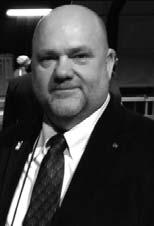
12 February/March 2017
Micheal Holmes President, Alabama Bandmasters Association
Richard Clary Red Band Clinician
Alfred L. Watkins was Director of Bands at Lassiter High School for 31 years. For six years prior to joining Lassiter, Watkins served as Director of Bands at Murphy High School in the Atlanta Public Schools. Bands under Watkins’ direction have performed four times at the Midwest Band Clinic, six performances at the Bands Of America National Concert Band Festival and four performances at the Georgia Music Educators Association In-Service Conference. The symphonic band has performed on the college campuses of the University of Georgia (4), Florida State University, the University of South Carolina and Troy State University. The Lassiter Percussion Ensemble has performed twice at the Midwest Clinic, PASIC, three times at the National Percussion Festival and four times at the Georgia Music Educators Association In-Service Conference. The Lassiter Marching Band was the 1998 and 2002 Bands of America Grand National Champion and the band also won nine BOA Regional Championships. Under Watkins’ leadership, the band also participated in four Tournament of Roses Parades, three times in the Macy’s Thanksgiving Day Parade, twice in the Orange Bowl Parade and once in the Florida Citrus Bowl Parade. Mr. Watkins has been selected as a member of the Florida A & M University Gallery of Distinguished Alumni, the American Bandmasters Association, the Georgia Chapter of the Phi Beta Mu Hall of Fame and the Bands of America Hall of Fame. He has received seventeen Certificates of Excellence from the National Band Association, the Sudler Order of Merit from the John Philip Sousa Foundation and the Band World Magazine Legion of Honor. In 2002, he was honored in the U.S. House of Representatives Congressional Record for his outstanding achievement. Mr. Watkins is Co-Founder, Conductor and Musical Director of the Cobb Wind Symphony, an all-adult community band based in the Atlanta area, which in 2009, earned the Sudler Silver Scroll Award presented to outstanding community bands in America and has performed twice at the Midwest Clinic. In 2014, Watkins received the Edwin Franko Goldman Awardfrom the American School Band Directors Association for outstanding contribution to the advancement of school bands. Currently, Mr. Watkins serves on the Midwest Clinic Advisory Committee. He and his wife for 33 years, Rita, live in Marietta. They have two adult sons.

University Jacobs School of Music. His transcription of Witold Lutosławski’s Paganini Variations for Solo Piano and Orchestra was premiered in 2012 by the Indiana University Symphonic Band. The USA Wind Ensemble has performed the host concert for the past two Alabama All-State Band Festivals and the Jaguar Marching Band has appeared, in the last two years, at the Raycom Media Camellia Bowl, the Alabama Governor’s Inaugural Parade, in exhibition at the Bands of America Super Regional in Atlanta, GA, and for the 2016 NOVA Home Loans Arizona Bowl.Petersen received his BME in Instrumental Music (2002), MM in Wind Conducting (2005) and DM in Wind Conducting (2013) from Indiana University. He holds memberships in the College Band Directors National Association (CBDNA), National Band Association (NBA), National Association for Music Education (NAfME), Alabama Music Educators Association (AMEA), the Alabama Bandmasters Association, the International Tuba and Euphonium Association (ITEA), Kappa Kappa Psi, Tau Beta Sigma, and Phi Mu Alpha Sinfonia.
Dr. William Petersen was appointed to the faculty of the University of South Alabama in 2012. Petersen serves as Director of Bands and is in charge of all facets of the university’s band program. He conducts the USA Wind Ensemble, the premier instrumental ensemble at USA, and the 250-member, nationally recognized Jaguar Marching Band. In addition he teaches applied tuba and euphonium, conducts the University of South Alabama Tuba and Euphonium Ensemble, coaches brass chamber ensembles including the USA Tuba and Euphonium Quartet, and serves as the tubist in the University of South Alabama Faculty Brass Quintet. Dr. Petersen also teaches course in graduate music education, marching band techniques, and conducting. Prior to his appointment at the University of South Alabama, Petersen spent three years earning his Doctor of Music in Wind Conducting degree from the Indiana

James Swearingen’s talents as a performer, composer/arranger and educator include a background of extensive training and experience. He has earned degrees from Bowling Green State University and The Ohio State University. In recognition of distinguished contributions, Mr. Swearingen was recently accorded the title of Professor Emeritus from Capital University located in Columbus, Ohio. Prior to his appointment at Capital in 1987, he spent eighteen years teaching instrumental music in the public schools of central Ohio. His first teaching assignment took him to the community of Sunbury, Ohio. He then spent fourteen years as Director of Instrumental Music at Grove City High School, where his marching, concert, and jazz bands all received acclaim for their high standards of performing excellence. Mr. Swearingen currently serves as a staff arranger for the famed Ohio State University Marching Band. In addition to his arranging responsibilities, Mr. Swearingen manages to be very active as a guest conductor, adjudicator and educational clinician. Appearances have included trips throughout the United States, as well as Australia, Canada, Europe, Japan, Norway, the Republic of China and Singapore. School directors, student performers and audiences worldwide have enthusiastically received Mr. Swearingen’s numerous contributions for band. With nearly 600 published works, he has written band compositions and arrangements that reflect a variety of musical forms and styles. In March of 2000, he was invited to join The American Bandmasters Association, considered to be the most prestigious bandmaster organization in the world. Mr. Swearingen received the 2002 Community Music Educator Award given annually by the Columbus Symphony Orchestra. In that same year, he became conductor of the Grove City Community Winds. On April 21, 2015, The Ohio State School of Music honored Mr. Swearingen with their Distinguished Alumnus Award. It should be noted that he is also a member of numerous professional and honorary organizations including NAfME, ASBDA, Phi Beta Mu and Pi Kappa Lambda. Many of Mr. Swearingen’s most popular band compositions have been recorded by the prestigious Washington Winds and are available on Walking Frog Records compact discs: His recordings include In All Its Glory, Exaltation, Celebration For Winds And Percussion, The Light Of Dawn, and the newest release, Flight of Valor.

ala breve 13
Alfred L. Watkins White Band Clinician
William Petersen Blue Band Clinician
James Swearingen MS Band Clinician
APRIL 5-8, 2017
Wednesday All-State Solo Festival - Huntingdon College, 1500 E Fairview Avenue, Montgomery, AL 36106
10:00 A. M.Registration and check-in
10:30 A. M-6:00 P. M.Preliminary Competition
7:30 P. M.State Solo Festival Finals Concert-Ligon Chapel
9:00 P. M. Band Hosts meeting
Thursday
Auditions, Meetings, Rehearsals - Renaissance Montgomery Hotel and Convention Center
12:00-7:00 P. M.Exhibits Open - Exhibit Hall B
12:00 P. M.Directors Meeting
1:00 P. M.Auditions begin
5:30 P. M. Audition results posted at each rehearsal location
6:30-9:30 P. M.All-State Band rehearsals
Red Band - Dr. Richard Clary, Conductor
White Band - Mr. Alfred Watkins, Conductor
Blue Band - Dr. William Petersen, Conductor
Middle School Band - Mr. James Swearingen, Conductor
7:00-9:00 P. M.Alabama Bandmasters Association Executive Board Meeting
11:00 P. M.Curfew for all participants
Friday Meetings, Rehearsals - Renaissance Montgomery Hotel and Convention Center
8:30-11:30 A. M.Exhibits Open - Exhibit Hall B (Exhibits will close for lunch from 11:30-12:00)
8:30-9:30 A. M.Exclusive time for directors to visit exhibits
8:30 A. M.-5:30 P. M.Rehearsals
10:00-11:30 A. M.ABA General Business Meeting - Exhibit Hall B
12:00-1:30 P. M. Lunch Break for all All-State Band participants
12:00-1:15 P. M.Phi Beta Mu Luncheon
12:00- 5:00 P. M. Exhibits Open - Exhibit Hall B
2:00-4:00 P. M.Possible Committee Clinic-Location TBA
8:00 P. M.Troy University Concert-Davis Theatre
11:00 P. M.Curfew for all participants
Saturday Rehearsals - Alabama State University
8:00-8:45 A. M.Middle School Band Rehearsal
8:45-9:30 A. M.Blue Band Rehearsal
9:00-9:30 A. M.ABA Board Meeting-Hotel
9:30-10:15 A. M.White Band Rehearsal
9:45-10:15 A. M. ABA General Business Meeting - Renaissance, Alabama BallroomB
10:15-11:00 A. M.Red Band Rehearsal
1:00 P.M.All-State Band Concert-Alabama State University-Dunn Oliver Acadome 915 S Jackson Street, Montgomery, AL 36104
Hotel - Renaissance Montgomery Hotel at the Convention Center
Thursday & Friday rehearsals – Renaissance Montgomery
Saturday morning rehearsals – Alabama State University Acadome
Saturday afternoon concert – Alabama State University Acadome
14 February/March 2017
ALABAMA BANDMASTERS ASSOCIATION STATE SOLO FESTIVAL AND ALL-STATE BAND FESTIVAL RENAISSANCE HOTEL AT THE CONVENTION CENTER, MONTGOMERY, ALABAMA









ala breve 15 College of Fine Arts Department of Music Music Scholarship Auditions Col s D rt e A in e F Fi leg us ent M Mu epartm ep sic A uditions f A progr No or music degr ditionsffo am and scholarship opportunities: ember 12, 2016 v y 28, 2017 Januar degree F w March 11, 2017 isit , v tionn,atinform fo e i or or m Fo /musicu/mwww.montevallo.edu/ it usic
Each Member of the Jaguar Marching Band receives a scholarship







Full-Band travel opportunities to away games and exhibitions























































































Matching university-provided wind instruments One Pre-Game Show and Three Half-Time Themes each season Fastest growing university in the state and region No fees and No fundraising
































FOR MORE INFORMATION



















For more Information about AUDITION DATES visit www.jaguarmarchingband.org or call 251-460-6136 www.jaguarmarchingband.org

Laidlaw Performing Arts Center 5751 USA Drive South, Room 1072 Mobile, AL 36688 251-460-6136 • usajmb@southalabama.edu UNIVERSITY OF SOUTH ALABAMA JAGUAR MARCHING BAND TE INFORMA AUDITIONDAAT TIO TES E DA NIVERSITY 5751
facebook.com/jaguarmarchingband twitter.com/usajmb
Cliff Huckabee President, Elementary/General Division
• President – Phil Wilson
• President-Elect – Kelly Hollingsworth


• Hospitality – Kristi Howze
• Treasurer – Lori Zachary
• Secretary – Rob Lyda
• Past-President – Cliff Huckabee
and hope to have our two clinicians secured soon. It will also be followed by our AMEA/AOSA Joint Workshop on Saturday, October 7th. We will send out more information soon via our email list.
I also wanted to update you on other upcoming events around our state:
Greetings from the Elementary/General Division of the AMEA! We just finished a very successful professional development conference in Montgomery and we are looking forward to a fabulous 2017!
For those who attended the conference, I hope you were all inspired by the clinicians and their sessions. I appreciate all our out-ofstate clinicians who presented sessions including Andrea and Joey Coleman, Roger Sams, Dr. David Frego, and Dr. Georgia Newlin. I also appreciate our Alabama teachers/clinicians including Dr. Patricia Corbin from JSU, Dr. Susanne Burgess from Samford University, Dr. Rob Lyda from Auburn City Schools, Mrs. Lea Hoppe from Randolph School, Mrs. Deanna Bell from Vestavia Hills City Schools, and Kristi Howze from UMS-Wright. We also had two wonderful performances from The Montgomery Academy 5th and 6th Grade Chorus led by Ms. Meg Griffin and the Ogletree Singers led by Mr. Phil Wilson. It was a great time of professional growth.
During the general business meeting at the conference we elected our new 2017-2019 Executive Board for the Elementary Division:
I encourage everyone to start planning for the 2018 conference in Birmingham at the BJCC. It will be held January 18-20 and it will be an exciting time as we move to a new location. I encourage our music teachers to consider doing two things for our next conference. First, I encourage you to submit a proposal for a session. I love to see our own music teachers sharing their ideas and passions during the conference. We learn so much from each other, so think about a topic that you feel you could share and submit. Second, I encourage those that have performing groups to submit a performance application. We are one of the largest divisions in AMEA yet we have the smallest number of performance applications each year. Let’s change that! It is a rewarding experience not only for you and your students but also for our division. It inspires and motivates us all to see quality performances from our own teachers. So, I strongly encourage our division to step up and submit proposals and performance applications for 2018! You can do both on the AMEA website: www.myamea.org
Our 11th Annual Elementary Music Festival will be held on Friday, October 6th at Samford University. We are still in the planning stages
AOSA Spring Workshop with Artie Almeida – March 4, 2017 – Samford University
Kodaly Workshop presented by SHAKE –April 22, 2017 – Vestavia Hills Elementary East
ACDA Young Voices Festival April 28-29, 2017 at University of Alabama
Orff Certification, Samford University: Level 1; June 19-June 30, 2017
Kodaly Certification, University of Montevallo – Levels 1, 2, & 3 – July 10-21, 2017
East Alabama General Music Workshop –Saturday, August 26, 2017
Lastly, if you are not receiving emails from the Elementary Division, please send us an email at:
elementaryamea@gmail.com
We would love to add you to our email list to keep you informed of upcoming news and events for our division. I wish everyone a great 2nd semester and do not hesitate to contact us if we can be of assistance to you.
Respectfully Submitted, Cliff Huckabee, President Elementary/General Division
Congratulations to all who contributed to the 2017 AMEA Professional Development Conference. This event is always energizing and informative and this year was no exception. The HED hosted clinicians whose topics included advocacy, copyright, web-
based instruction, arts integration, inclusivity, video game music, and EdTPA. In addition, our panel discussion included accomplished pianists who work in tandem with students and applied faculty. We would like to thank panelists from Alabama State University: Dr. Adonis Gonzalez (piano faculty), Dr. Katrina Phillips (clarinet faculty), Terrance Brown (voice faculty), Zabriel Rivers (voice student), and Devin Gavin (clarinet student). From the University of Montevallo, we were joined by Dr. Laurie Middaugh (piano instructor), Dr. Joseph Ardovino (trumpet faculty), and Sam
Ardovino (trumpet student). These panelists performed on the HED recital later that afternoon.
In addition, the HED and the Collegiate Division hosted a combined mixer that was well attended by both students and faculty. We look forward to future collaborative efforts to explore mutual interests between divisions, particularly as EdTPA approaches. Comments and suggestions are always welcome!
I wish you a wonderful spring semester!
ala breve 17
Becky Halliday President, HigherEducationDivision
Brian Wesolowski, Ph.D.





















18 February/March 2017 online.uga.edu The excellence you expect from UGA. Master of Music Education now offered online.
AMEA Awards



AMEA M AMEA M EMBERSHIP EMBERSHIP H H ONOR ONOR R R OLL OLL
The Alabama Music Educators Association is proud to recognize those AMEA members having 25 or more years of continuous membership in NAfME. This year, each person attaining 25 years and those reaching increments of five years beyond that will be honored. The following music educators were honored during the Friday morning General Session.




Darry Pilkington - 60 years
John Papastefan - 55 years
Thomas Brannan - 45 years
Cheryl Clark - 40 years
Richard DeLaFuente - 40 years
Mike Jones - 40 years
Dianne Johnson - 40 years
Verginia Matherly - 40 years
Grailor Price - 40 years
James Rogers - 40 years
David Spencer - 40 years
Diane Turner - 40 years
Rudolfo Barraca - 35 years
Deborah Basinger - 35 years
Randall Coleman - 35 years
Randall Fowler - 35 years
Melanie Harris - 35 years
Richard Holland - 35 years
Jeffrey Hudson - 35 years
Deborra Street - 35 years
A.B. Baggett - 30 years
John Baker - 30 years
Russell Courson - 30 years
Harold Powell - 30 years
Gene Swanner - 30 years
Paul Andrews - 25 years
Ricky Ashcraft - 25 years
Linda Bean - 25 years
Larry Cornelius - 25 years
Carl Davis - 25 years
Beth Galloway - 25 years
Philip Min - 25 years
Kay Newman - 25 years
Terry Ownby - 25 years
George Simpkins - 25 years
David Simpson - 25 years
Renee Thomas - 25 years
ala breve 19
AMEA Outstanding Administrator
Dr. Mark Richardson, center, with Carl Hancock and Susan Smith
Ed Cleino Outstanding Young Music Educator Will Parker with Carl Hancock and Susan Smith
Darry Pilkington, center, congratulated for 60 years of service to AMEA by Carl Hancock and Susan Smith
FAME scholarship recipient Christopher Shorter congratulated by Carl Hancock and Susan Smith
Outstanding Young Composer Finalist Harrison Hornsby and AMEA President Susan Smith
Outstanding Young Composer Finalist Chandler Ogles and AMEA President Susan Smith
Conference Photos
























20 February/March 2017
Choral Music Reviews
I Sing Because I’m Happy
Music by Charles H. Gabriel (1856-1932)
Arranged by Kenneth Paden, Adapted by Rollo Dilworth
Text: Words by Civilla D. Martin (1866-1948)
SATB, Piano
Publisher: Hal Leonard, 00124479 (Henry Leck Choral Series)
Approximate performance time: 3’30”
Performance videos of the original Georgia Mass Choir version and various performances of Dilworth’s adaptation can be found on YouTube.
This gospel-style interpretation of the hymn, “His Eye is on the Sparrow,” was originally performed and recorded by the Georgia Mass Choir. Dilworth’s adaptation lowered the original key by a whole step, eliminated solo verses, and added a bass part. Full of call and response passages, this exuberant adaptation captures the essence of the joy of corporate choral music-making. Dilworth adds an additional nod to the original by his setting of the “Special Chorus” found in measures 39-46. This portion should be sung a total of six times (Dilworth suggests the following order: first time, tutti; second time, soprano part only; third time, alto part only; fourth time, tenor part only; fifth time, bass part only; sixth time, tutti with optional accompaniment) or the conductor can create his/her own unique version. If you have a tenor soloist that can improvise above the choir, this is also an effective addition for measures 47 to the end. This piece is sure to bring down the house, so be ready to repeat a reprise of special chorus (measures 39-end). I guarantee the audience will be on their feet, singing, clapping, and participating in the joy! Accessible for all high school choirs.
Magnificat
Halsey Stevens (1908 - 1989)
Text: from the Biblical Magnificat or Canticle of Mary, Luke 1:4655
SATB Chorus, Piano or Organ, Trumpet
String Orchestra parts are available (rental)
Publisher: Mark Foster Music Company, MF0108
Approximate performance time: (between 6 and 7 minutes, depending upon tempo)
An internationally respected musicologist and composer, Stevens wrote extensively for orchestra, chamber groups, keyboard, and chorus. Commissioned by the Alpha Alpha Chapter of Pi Kappa Lambda or the North Texas State University Choir in 1962, the Magnificat (also known as the Song or Canticle of Mary) is one of eight ancient Christian hymns and perhaps one of the earliest Marian hymns. The text of the canticle from the Gospel of Luke reflects Mary’s gratitude to God for choosing her to bear His Son. Stevens uses a recurring motif in the unaccompanied trumpet that
is first heard in the opening phrase and interwoven throughout with and without the choir. Set with lots of dissonance, offset and multiple meters, and strong dynamics, this piece boldly describes the strength behind both Mary’s words and her resolute view of her place in the Incarnation. While this piece is suitable for advanced high school/collegiate choirs, groups should have a versatile soprano section that can handle a slightly higher than normal tessitura and access to a highly proficient trumpet soloist and accompanist.
I Will
Words and Music by Paul McCartney (credited to Lennon/McCartney)
Arranged by Jeremy Fox
SSATB (approximate level 3), Piano, Bass, Shaker
Publisher: Jeremy Fox (www.jeremyfox.net)
Approximate performance time: 4’22”
This beautiful, lush (and ACCESSIBLE) newly licensed arrangement of Paul McCartney’s “I Will” can serve as a tender ballad in your vocal jazz set OR can serve to introduce your group to the tonalities and sensibilities of the lyric through an approachable (but characteristic) vocal jazz ensemble sound. Jeremy has a way of being able to provide mid-level arrangements that are every bit as nuanced as other more difficult arrangements. “I Will” features a female soloist throughout (you can opt to use the same voice or feature several of your girls on smaller shared solos). Gentle syncopation is used throughout, one interesting key shift occurs toward the end, and measures 46-57 allow for some improvisation above the ensemble parts (no scat required! Just use fragments of the text like “I will”). You can visit Jeremy’s site and listen to the score (while watching on screen!). See for yourself –I think you’ll want to program this piece for your group.
Dr. Diane Orlofsky is Professor of Music and Director of Choirs at Troy University, where she oversees the choral program and teaches undergraduate and graduate classes in music education. She is the conductor of the Troy University Concert Chorale and the Director of the Troy University vocal jazz ensemble, frequency.

ala breve 21
Dr. Diane Orlofsky
Thank you for your contributions to the AMEA Conference
AMEA CONFERENCE
It was so nice to see many of you at our conference last month. I appreciate all those who worked to be sure that everything ran smoothly. Those who were in attendance enjoyed re-connecting with each other, sharing information, and attending sessions and concerts. If you did not attend the AMEA conference this year, I encourage you to go ahead and make plans to do so next year. We are excited and a little nervous about our move to Birmingham in 2018, and are looking forward to the opportunities that a different venue will open up for our conference.
I certainly enjoyed my interaction with J.D. Frizzell at the AMEA conference. I particularly appreciated his session on teaching philosophy. It is so important to reflect on what we do each day instead of merely running on autopilot. I thought his reading session addressed content for various levels and included repertoire appropriate for our singers. I encourage you to contact JW Pepper any time that you need literature as they provided the reading session booklets at no cost to AVA. Our other sessions covered a variety of topics from “how to” vocal jazz and a cappella pop to proper diction to recruiting and retention. If you have something new or interesting that you would like to share, I encourage you to submit to present at AMEA next year.
Congratulations to the students and directors who provided performances at the conference. Because of our move to an alternate performance venue, we were able to hear more choirs than we have in the past. We hope to continue the pattern of an alternative venue and a two-hour concert block at the 2018 AMEA Conference. We encourage you to submit an application to perform. This year, we will provide you with a recording of your SCPA performance as a part of your SCPA registration cost. Our hope is that the recording will make it a little easier for you gather the materials needed for your application.
ALL-STATE FESTIVAL
We are looking forward to seeing you and your students who were chosen to be a member of an all-state choir in March. You will find information about all-state and the conductors in this issue of the Ala Breve. Or, you may visit the AVA website to view the information. By the time you read this article your all-state correspondence packet will be available on the AVA website from our president-elect Meg Jones.
We appreciate Samford University for once again hosting all-state. Kenny Gannon, Brian Ernsberger, and their staff have already begun working to be sure that our event is a success. Thanks to everyone who has agreed to serve as a choir coordinator, assistant coordinator, or attendance monitor. Your service is appreciated.
SCPA
In an effort to connect with our colleagues who are not plugged in with AVA, we are offering a free registration initiative for State Choral Performance Assessment. Directors may register one choir for free (school fee and student fees waived) if their school has not participated in SCPA in the past three years. Please share with your colleagues who may be interested in taking advantage of this offer.

We are also pleased to be able to provide additional services this year during our SCPA event. Each district chair will contract a recording engineer to record all choirs that perform at SCPA. After SCPA is complete, each director will receive a copy of his/her ensemble’s recordings at no additional cost.
COMMUNICATION
This year we have made an effort to provide the AVA membership with increased instruction and reminders about registration deadlines, etc. We occasionally get questions about where to find information. You should expect all information for all AVA events to be available on our website. For example, if you are attending an SCPA in another district, you should be able to get all information concerning the event you are attending from the AVA website. Let your district chairman know if you have difficulty accessing anything.
The AVA Board is continually striving to 1) maintain adherence to our mission statement and 2) improve our functionality. Along those lines, we have begun discussion about the following:
l Streamlining the All-State audition process using available recording technology rather than sending five judges on a tour around the state
l Modifying the sight-reading portion of SCPA to allow directors to choose an appropriate sight-reading example for their students based on students’ ability
l The future of All-State Show Choir and how it fits into the structure of AVA
We are interested in thoughtful, written feedback in the form of an email to me or anyone else on the AVA Board. Please let us know if you have anything you would like to add to the conversation. Your thoughts are welcome and appreciated.
Thank you for taking the time to read about your professional association. Please send questions, suggestions, or ideas to me at presidentofava@gmail.com. I am looking forward to seeing you in March!
Ginny Jeffery
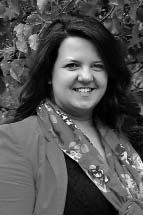
2017Alabama
AVA All State Clinicians
Redding,
Directorof
Choral Activities at West Orange High School, Winter Garden, Florida, has led his choirs in performances at State, Regional, and National conventions of the American Choral Directors’ Association (ACDA). West Orange choirs have earned first place awards at Heritage Festivals of Gold in California, Chicago, New York and at the Festival of Spirituals in Washington D.C. While participating in the International Music Festival, in Verona, Italy, West Orange received the Gold Award for best choir, with Dr. Redding honored as top director. While Director of Choral Activities at West Virginia University (WVU), he led his choir on college
22 February/March 2017
Ginny Coleman President, AlabamaVocalAssociation
HS SATB
Jeffrey Redding
recruitment tours—the Southern tour culminating in a performance at Florida ACDA. On the Eastern tour, the WVU choir was featured in concert at Lincoln Center, and was joined by choirs from across the country in a performance of Schubert’s Mass in G with members of the New York Philharmonic under Dr. Redding’s direction. Nationally, Dr. Redding is in demand as a guest conductor and lecturer. He has conducted the ACDA National High School Honor Choir, the Central Division ACDA Honor Choir, the North Central Division ACDA Honor Choir, the Eastern Division ACDA Honor Choir and All-State and Honor choirs in Alabama, Arkansas, Colorado, Connecticut, South Dakota, Florida, Georgia, Illinois, Indiana, Kansas, Kentucky, Louisiana, Minnesota, Mississippi, Montana, New Jersey, North Carolina, Ohio, Oklahoma, Rhode Island, South Carolina, Tennessee, Texas, Virginia, Washington, West Virginia, and Wisconsin. In 2014, he was the only American adjudicator at the International Choral Festival, Verona, Italy. In 2015, he guest conducted Disney’s Candlelight Processional at Epcot. Dr. Redding directed the Mormon Tabernacle Choir for their 2005 spring broadcast. He has been featured as guest conductor at Carnegie Hall, Alice Tully Hall, Kennedy Center, and Orchestra Hall on numerous occasions. He has also been honored to give the prestigious TEDs Talk. Dr. Redding was awarded the R. Wayne Hogoboom Distinguished Service Award for dedicated service, leadership, and excellence by the Florida Chapter of ACDA in November 2015. Redding is founder and Artistic Director of the Garden Community Choir in Winter Garden, Florida. Formerly with the Moses Hogan Singers, he is now a member of the professional male singing group, “Brethren.” The Jeffery Redding Passion and Purpose Choral Series is a compilation of new choral music by various composers, published by Cola Voce Music, Inc. Dr. Redding holds a Ph.D. in Choral Conducting/Music Education and an M.M.E., both from Florida State University, and a B.S. in Music Education from Florida A&M University. He is a member of ACDA, NAfME, FVA, NATS, and Chorus America. In the Florida Vocal Association (FVA) he has served as District 8 Chairperson. In the Florida ACDA, he has served as State R&S Chair for Ethnic Music/Multicultural Affairs, Co-Chair for the High School Mixed Honor Choir, and Youth/Student Activities. Currently, he is the State R&S Chair for High School Mixed Choir for Florida ACDA.
Sigrid Johnson has been an artist in residence on the voice and choral faculty at St. Olaf College in Northfield, Minnesota, for 32 years. During her tenure as conductor of Manitou Singers, the 100-voice chorus for first-year women at St. Olaf, Johnson has inspired more than 3,200 young women. As a lecturer and guest clinician at choral workshops and all-state music festivals in over 30 states she has enriched and deepened the musical experience of countless singers of all ages across the country. Johnson is known for her skill at blending voices, perfecting tone and assisting with vocal production — both psychologically and physiologically. Johnson earned her bachelor of music degree in vocal performance from St. Cloud State University and a master of music degree in voice performance from the University of Michigan. She was on the choral/voice faculty at the University of Minnesota-Minneapolis and Gustavus Adolphus College in St. Peter, Minnesota. She was a member and associate conductor of the Dale Warland Singers and music director of the Dale Warland Symphonic Chorus. She was a presenter at the World Choral Symposium in Copenhagen, Denmark in 2008 and in Puerto Madryn, Argentina in 2011. A lecturer on choral tone at the Ninth World Choral Symposium on Choral Music in Puerto Madryn, Argentina in 2011, Johnson also was a featured lecturer at the Eighth World Symposium on Choral Music in Copenhagen, Denmark in 2008 and the Sixth World Symposium on Choral Music in Minneapolis, Minnesota in 2002. Johnson has prepared symphonic choruses for internationally known conductors Neemi Jarvi, Sir Neville Marriner, David Zinman, Stanislaw Skrowaczewsky, Gerard Swartz, Edo de Waart, Eric Ericson and Leonard Slatkin. In 2006 Johnson received the F. Melius Christiansen Award from the American Choral Directors Association of Minnesota (ACDA-MN). The lifetime achievement award — the highest honor from the association — is presented to a Minnesota choral conductor whose career has provided outstanding contributions and distinguished service to choral music. Today, Johnson is professor emerita of music at St. Olaf College and associate conductor emerita for Philip Brunelle’s VocalEssence in the twin cities.
While now retired from her academic tenure, she is active as a conductor and clinician specializing in women’s choral literature.
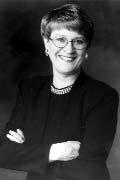
Dr. Craig Zamer is Associate Professor and Director of Choral Activities at Tennessee Tech University,where he conducts the Tech Chorale, The TTU Concert Choir,and the Cookeville Mastersingers.


Dr. Zameralso teaches undergraduate courses in choral conducting, choral literature,secondary choral methods, and is responsible for supervisingstudent teachers.
Dr. Zamer received his Bachelor of Arts degree with a double major in Vocal Performance and Music Education from Virginia Tech University. He also holds the M.M.E.and Ph. D. degrees in Music Education and Choral Conducting from The Florida StateUniversity. Before coming to Tennessee Tech, Dr. Zamer taught high school choral music inVirginia. He has been an invited clinician, conductor, and adjudicator in Florida, Colorado,Iowa, Illinois, Tennessee, and Virginia. Dr. Zamer has also conducted abroad in England, Ireland, Wales,France, Switzerland, Austria, Italy, Germany and China.
Alan C. McClung joined the University of North Texas College of Music faculty in 2002. In addition to supervising student teachers, he teaches graduate and undergraduate music education courses in choral conducting and secondary choral methods, including Up Front!, UNT’s eightyvoice pedagogical choir for music education. With a Ph.D. in Music Education from Florida State University, Dr. McClung’s professional experience includes teaching and conducting at all levels. In addition to six European concert tours, his middle, upper, and college choirs include numerous invited performances for a variety of state and regional music conferences. He has conducted
ala abreve 23
HS SSA
Sigrid Johnson
HS TTBB Craig Zamer
MS Mixed Alan C. McClung
a variety of state and regional honor choirs and has served as guest conductor for the award winning Landesjungenchor from Koblenz, Germany. As chorister and soloist, Dr. McClung spent three seasons singing with the Atlanta Symphony Chorus and Chamber Chorus under the direction of Robert Shaw. An active member of ACDA and NAfME, he served as a national delegate to ACDA’s International Conductor Exchange with Germany and Sweden, Georgia’s Music Educator’s State Choral Chair, Missouri’s ACDA Repertoire and Standards Chair for Colleges and Universities, and the R & S Chair for Southwest ACDA’s Student and Youth Activities. As a distinguished choral music educator, he is invited frequently to present at state, divisional, and national music conferences. Additional presentations include master classes at Roehampton University, London, England. Articles by Dr. McClung have appeared in Southeastern Journal of Music Education, ACDA’s Choral Journal, MENC’s Music Educators Journal, Update: Applications of Research in Music Education, and Journal of Research in Music Education. He is the author of Movable Tonic: A Sequenced Sight-Singing Method, a GIA publication, and the director of the Cambiata Institute of America for Early
Adolescent Vocal Music, established on the campus of the University of North Texas in 2009. In 2015, he was named the new managing editor for the publishing company, Cambiata Press. A UNT Honors Professor, and the 2016 host of the Third MS/JH National Conference for Choral Music, he has been invited to present at the Eleventh World Symposium on Choral Music and the International Federation for Choral Music (IFCM) in Barcelona, Spain, July 2017.
Mary Biddlecombe serves as Artistic Director of the Blair Children’s Chorus at Vanderbilt University. She conducts each of the six graded choirs of the program, including the Concert Choir (high school girls), Young Men’s Chorus (changed men’s voices), Choristers (middle school girls), Boychoir (unchanged boys), Training Choir, and the select treble ensemble Chorale. Biddlecombe has taught music at every grade level. Choirs under her

2017 AllState Festival Schedule
Wednesday, March 1, 2017
9:00 AM AVA Board Meeting, Wright Center Basement
2:45 PMMale OCS Competition, Brock Recital Hall
4:30 PM OCS/OA Picture, Brock Recital Hall
5:00 PM Female OCS Competition, Brock Recital Hall OA Competition, Buchannan Hall 109
Thursday, March 2, 2017
8:0011:30 AMASSC Rehearsal, Wright Performance Center
10:001:00 PMRegistration, Wright Basement
1:001:45 PMGeneral Assembly and ASSC Performance, Wright Performance Center
2:005:30 PMRehearsal 1
HS SATB, Wright Performance Center
HS SSA, Brock Recital Hall
HS TTBB, Cooney Hall 305
MS Mixed, DBH 131
MS Treble, Reid Chapel
5:307:30 PMDinner Break
7:309:30 PMRehearsal 2, Same sites as first rehearsal
11:00 PMCurfew
Friday, March 3, 2017MIDDLE SCHOOL –
8:3010:00 AM Rehearsal 3
MS Mixed Rehearsal, DBH 131
MS Treble Dress Rehearsal, Wright Performance Center
9:00 AMGeneral Membership Meeting, Brooks Auditorium
10:0011:30 AMMS Mixed Dress Rehearsal, Wright Performance Center
MS Treble Rehearsal, DBH 131
11:301:30 PMLunch Break
direction have been invited to perform for conventions of the American Choral Directors Association, as well as symphonic works with significant orchestras. Recent projects have included John Adams’ On the Transmigration of Souls, Mahler’s Third Symphony, Leonard Bernstein’s Mass, Benjamin Britten’s War Requiem, Roger Waters’ Ça Ira, and Gustav Mahler’s Eighth Symphony with the Nashville Symphony Orchestra, and John Rutter’s Mass of the Children with the Vanderbilt Symphony Orchestra and Symphonic Choir. Biddlecombe is in demand as an adjudicator and clinician. She has presented interest sessions and conducted various honor choirs all over the Southeast including the Florida All-State Middle School Treble Choir. A native of Syracuse, N.Y., she holds a Master of Music in Conducting from Florida State University and a Bachelors of Music Education from the Crane School of Music at SUNY Potsdam. Biddlecombe makes her home in Nashville with her husband Tucker Biddlecombe, Director of Choral Activities at Vanderbilt.
1:303:30 PMRehearsal 4
MS Mixed, Reid Chapel
MS Treble, DBH 131
6:30 PMCall Time for Concert
7:00 PMMiddle School Concert
Friday, March 3, 2017HIGH SCHOOL –
8:3011:00 AMRehearsal 3
HS SATB, Reid Chapel
HS TTBB, Cooney Hall 305
HS SSA, Brock Recital Hall
9:00 AMGeneral Membership Meeting, Brooks Auditorium
11:001:00 PMLunch Break
1:002:30 PM Rehearsal 4
HS SATB Dress Rehearsal, Wright Performance Center
HS SSA, Brock Recital Hall
HS TTBB, Cooney Hall 305
2:304:00 PMHS SATB, Brock Recital Hall
HS SSA Dress Rehearsal, Wright Performance Center
HS TTBB, Cooney Hall 305
4:005:30 PMHS SATB, Brock Recital Hall (Same as before)
HS SSA, Reid Chapel
HS TTBB Dress Rehearsal, Wright Performance Center
7:00 PMMiddle School Concert
Saturday, March 4, 2017
11:00 AMHS SATB WarmUp, Wright Performance Center
HS SSA WarmUp, Brock Recital Hall
HS TTBB WarmUp, Bolding Studio
11:30 AM Call Time for HS Concert, Wright Performance Center
All Performers Seated
12:00 PMHigh School Concert
24 February/March 2017
MS Treble Alan C. McClung
SYMPHONIC

17, 2016 –––––––––––––
MARCHING HONOR BAND SEPTEMBER
21-22, 2017
HONOR BAND APRIL
M A R I O N
OLLEGEC
COLLEGE PROGRAMS:


Educa
arn
car while tr
Leadership Education – Learn leadership & organizational management while training for a civilian career
acceler
Early Commissioning – An accelerated path to becoming an Army officer in just two years
students for epare
Service Academy – A one-year transfer program to prepare students for entrance into U.S. Service Academies

M I L I T A R Y I N S T I T U T E T I MIL L I N Y R A T U T I T E
ogr
e
adership
Le aining
ommissioningC tion
le e – L eer An
–ganiza adership or th ted pa a tional of officer ffi ye Service ance into U entr ars ar tr one-ye A –Service .S. am to pr
ansfer pr
Platoon Leaders Course – The most popular route for cadets who wish to be commissioned officers in the Marine Corps

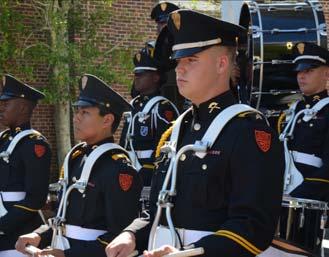


Air Force ROTC – Enabling students to pursue a degree while earning an officer’s commission



ee while e degr Training am a progr
fi arning offfi aining xtracurricular An et the local airfield
s commission ’ ficer
Flight Training - An extracurricular, certified flight program at the local airfield
tifiedcer acurricular,


ourse
he r
orps
oute
e toon L Pla of in the Marine C ce RO or Air F
aders C
T –
TC
fice ommissioned offfificers
To arrange a visit, email music@uab.edu or call 205 934-7376







































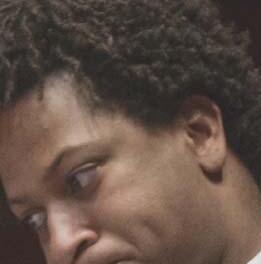













Band Music Reviews
“This much I know. If you are what you eat, then I only wanna eat the good stuff.” This quote from the movie “Ratatouille” could be altered just a bit to speak about the literature we perform. I would like to thank President Smith for asking me to contribute to Ala Breve with reviews of some of the “good stuff” that is available to us as wind band conductors and educators. I hope that with each review, I am able to provide information to you that will help you find literature that is educational, exciting and meaningful to you and your students.
Don Hanna by Gabriel Musella with percussion by Rick Rodriquez is a new publication from Boosey & Hawkes’ “Windependence” series. Don Hanna is a paso doble, written in the style of latin marches that were so popular in the 1950’s and 1960’s. A welcome addition to our repertoire, the piece allows almost every instrument the opportunity to play the melody. Don Hanna is written at the grade 4 level, making it an excellent opening selection for your concert at MPA or at home. There are numerous opportunities for teaching expressiveness, rhythmic cohesiveness, balance and blend. Don Hanna also offers us the ability for cross-curriculum work with your social studies department and your world languages department. Delightful melodies combined with expressive counter-lines combine to make an energetic, expressive and fun “march” for your ensemble.
Rossano Galante has made significant contributions to our repertoire over the past several years. Red Rock Mountain, published by Alfred Music, is another of his soaring works for wind band that evokes images of an expansive movie score. As with most of Galante’s works, Red Rock Mountain is very easy to listen to and draws the listener in with it’s soaring lines, bold brass fanfares and fast-moving woodwind lines. The piece features prominent lines for the horns and trumpets and fast technical scale passages for the woodwinds. Opening with a bold fanfare, Red Rock Mountain moves to the principal theme stated in both the horns and the upper woodwinds. The lyrical “B” section features solo flute and the clarinets in the chalumeau register.
The horns are once again prominently featured as the the fast paced “A” theme returns and moves the piece to an exhilarating conclusion. Written at the grade 5+ level, Red Rock Mountain is “classic Galante”. If you are fan of his previous works, you will be a fan of Red Rock Mountain. Providing technical challenges and many expressive opportunities, Galantes works are also extremely challenging not only from a technique standpoint, but from an endurance standpoint. This is another outstanding addition to the advanced band repertoire.
Resplendent Light, written by our own Tyler S. Grant, is a new lyrical work for solid grade 3 ensembles. Published by FJH Music as a new addition to its “Young Band” series, the piece features beautifully written lines with a sophisticated harmonic structure that combines for a very playable, yet challenging work. Brief solos for clarinet and euphonium set up the primary theme, supported by very interesting and well-constructed percussion writing. With very reasonable ranges in all brass instruments, Resplendent Light is a welcome addition to this grade level works that will allow the conductor to stretch the ensemble musically and is very enjoyable for developing musicians to perform. A highly recommended lyrical work for your next performance.
Randall Coleman, Wind Band Music Reviewer Associate Director of Bands The University of Alabama rocoleman@ua.edu


The AMEA Professional Development Conference was wonderful! I would like to thank the volunteers who helped stuff packets on Wednesday evening. It was great seeing you all networking with each other while you assisted. I would also like to thank all of you that pre-registered for helping to make the check-in process so easy! We are using the NAfME equipment now and it really helps us speed up the process so you can attend the concerts and clinics instead of standing in line. We still have a great number of people who wait until check-in to join or renew their NAfME membership and to register on-site for the conference. Let me encourage you to plan ahead to join, renew, and pre-register next year. It takes less than a minute at the conference to check-in if you have done this. There is also a
discount if you pre-register so take advantage of this incentive. We will continue to offer on-site registration and plan to have several computers available for that purpose when we move to Birmingham, but you can avoid the long lines and delays by doing your part.
Currently, we are seeing about 75% of our membership use the pre-registration option which is great, but we can do better! My goal is 100% pre-registered with no delays in the process of checkin. I encourage you to do your part by planning ahead. On June 30, 2017, all members need to renew their membership, and in late August, pre-registration will open for the 2018 conference. Go ahead and add these dates to your calendar as a reminder! Again, thank you for attending the conference.
ala breve 29
Randall Coleman
Pat Stegall, AMEA Treasurer/Registrar
Multicultural Education: USA Music Students’ Attitudes toward their Diverse Peers
As an educator in the United States’ public school system, have you ever noticed your students’ attitudes toward their diverse peers? Students can acquire negative and positive attitudes from their teacher, community, or home (Carlyle, 2008). Because music students’ attitudes can be learned prior to entering a music program, teachers will need to have positive attitudes and utilize teaching practices that will benefit every student that is enrolled in their classes. Utilizing culturally diverse content and speaking positively about diverse cultural groups are aspects of teaching from a multicultural standpoint. By teaching from a multicultural approach to education, music teachers can redirect their instruction to positively impact a culture that is influenced by the negative biases of society. This article discusses the development of students’ attitudes toward cultural diversity in the United States and, how teaching from a multicultural standpoint is an opportunity for teachers to address students’ attitudes toward diverse pupils in music programs. It criticizes viewpoints about multicultural education, and discusses how teachers can challenge their beliefs.
How do Students Acquire Negative Attitudes Toward their Diverse Peers?
As music educators, it is important that we are creating a learning environment that addresses students’ negative beliefs about diverse cultures. However, music educators neglect to understand how students acquire negative beliefs about cultures that are not like their own. Once music teachers understand how students acquire negative viewpoints about culturally diverse students, they will be able to create various musical activities that can help students to speak positively about diverse cultures. According to Johnson and Darrow (2003), students’ attitudes toward diverse cultures are learned “early in life from cultural influences such as school, literature, visual and print media, and our language” (p. 33). That is, students’ attitudes are acquired through “observational learning,” thereby students in the United States’ music programs acquire beliefs and assumptions about diverse cultures
by Krista Edwards
from the society in which they live (p. 34). For example, if a music student heard someone say that children from Moscow are very smart in math, then the student will have the belief that every pupil from Moscow has high intelligence in subjects such as math. The student’s belief in this instance is positive, however, some students in the United States’ music programs have acquired negative attitudes about students from diverse cultures. According to Mantle-Bromley (as cited in Campbell, 2008), many students come to music classes with preconceived attitudes toward diverse cultures that can “affect their learning process about different cultures” (p. 24). That is, negative remarks can adversely affect a child’s learning experience and “cognitive skills” (Haynes, 2012, p. 27). Furthermore, if the students’ attitudes are acquired from home or the community in which they live, then those students are possibly unaware of their negative attitudes toward their diverse peers. If students are unaware of their negative attitudes toward their diverse peers, then it is the teachers’ responsibility to address the issue during class periods. Vang (2010) believes that students are prejudiced when they have negative attitudes about diverse cultural groups, although they may not know it. “[P]rejudice is any unjustified negative attitudes or expressions toward a group of people solely on the basis of their membership in a group different from that of the prejudiced” (p. 36). In other words, the negative attitudes of some music students in the United States are not supported by facts or evidence, but by beliefs and stereotypes of a diverse cultural group.
Although music students’ negative attitudes toward other cultures are usually learned from their home or community in which they live, they can also be acquired from the music teacher. According to Gay (as cited in Carlyle, 2008), there are many music teachers who enter the classroom with negative attitudes toward “cultural diversity” (p. 31). Some teachers have low expectations for certain cultural groups and are not thrilled about implementing culturally relevant pedagogy
30 February/March 2017
Teachers will need to challenge their beliefs in order to create a learning environment where students from diverse cultures can succeed.
that will benefit students from diverse cultures (Carlyle, 2008). According to Nieto (as cited in Carlyle, 2008), music teachers’ expectations are usually based on students’ gender, race, and socioeconomic background. Teachers with biased views about different ethnic groups are usually unfamiliar with the traditions of the diverse cultures (Carlyle, 2008). According to Cole (2008), an educator with high expectations believe that their students have the ability to succeed in “demanding activities” (p. 49). Teachers with high expectations ask open-ended questions, expect students to conduct research, and allow students to state their opinions during class periods (Cole, 2008). Therefore, teachers will need to become aware of cultures that will be present in their classrooms, especially in the United States because of the increasingly diverse school population. There is approximately 49 million children in the Unites States’ public schools that are foreign born or have at least one parent that is from a different country (Nieto, 2010). Because of the growing population of diverse students in public schools, teachers will need to find a music curriculum that will meet the needs of children from diverse cultures and to challenge their beliefs.
Challenging Teacher Beliefs
Teachers will need to challenge their beliefs in order to create a learning environment where students from diverse cultures can succeed. According to Braud (2007), researchers and professional educators have developed university coursework that will help to challenge teachers’ beliefs about cultural diversity and to explore their identities. In this manner, teachers in the United States are able to understand the various privileges that they have because of their membership in the dominant group of society and what negative beliefs they have toward diverse cultures. Santoro and Allard (as cited in Braud, 2007) conducted a research that examined the teachers’ identity and their work with students from diverse cultures. Through the data that was collected from journals, field notes, and interviews, researchers found that some of the teachers recognized the lack of culturally diverse content in the curriculum, but they were unable to change their curriculum to meet the needs of diverse students; however, other teachers during the research were able to modify their curriculum to include various resources for diverse students because of their field experiences (Braud, 2007). By placing teachers in the community, rather than the classroom setting, researchers found that
teachers had a better understanding of their students’ cultures (Braud, 2007). Horm (as cited in Braud, 2007) stated that field experiences can increase teachers’ awareness about various cultures that are unlike their own. By interviewing, researching information, and participating in multicultural community activities, music teachers can gain knowledge about the cultural values of students from diverse cultures.
Impact of Multicultural Education on Students’ Attitudes
Researchers found that teaching from a multicultural standpoint has a “positive impact on students’ attitudes, and knowledge about, other cultures” (Volk, 1998, p. 92). According to Harmon and Jones (2005), multicultural education is a curriculum for understanding the diverse cultures of the United States. Furthermore, it is concerned with “exclusions based on race, gender, socioeconomic status, religion, primary language other than English, ability, and sexual orientation” (p. 145). Additionally, multicultural education is an approach that music teachers can utilize in their classrooms to address the needs of students from diverse cultures. However, the main goal of multicultural education is to provide “educational equity for all students” (p. 145). In this manner, students from diverse cultures will have the same educational opportunities as their peers who are members of the dominant group. For generations, individuals who are not part of the dominant group of society are seen as “culturally deficient, deprived, or disadvantaged” (p. 145). When teachers believe that the dominant culture has more value than other groups of society, they are creating a negative environment for their students, which can cause them to acquire negative beliefs about diverse cultures. According to Gonzalez (2009), the importance of utilizing children’s diverse cultures in the music curriculum is to accelerate their “social adaptation” to an unfamiliar classroom setting (p. 22). Furthermore, diverse students are more enthusiastic about learning within a classroom setting where they can interact with students who are positive about their cultural backgrounds. As an educator, utilizing musical repertoire that is familiar to diverse students’ homeland creates a positive learning environment where students are willing to participate in classroom activities and have positive attitudes about attending school in the United States. Multicultural education requires teachers to have knowledge about diverse cultures, positive attitudes toward
ethnic groups, and have an understanding about students’ “learning and cognitive preferences” that may be affected by educational factors such as the exclusion or absence of diverse materials in music curricula (Sinagatullin, 2003, p. 240).
Sleeter (1996) suggested that multicultural education can be utilized by music teachers to eliminate negative attitudes that can affect students’ learning experiences. Teaching from a multicultural approach to education helps students to develop a diverse perspective that will prepare them to interact with different cultures within a global environment. However, to effectively utilize a multicultural approach to education, music teachers must first identify their own biases and eliminate any negative attitudes that they discover (Martin and Loomis, 2007). For example, as a music educator, there have been situations where colleagues would tell students that they could not speak in their native language. As in this case and others, teachers mistakenly view students’ linguistic versatility as disrespectful because the teacher has no clue of what the child is saying. Teachers’ attitudes toward diversity can affect the way that a lesson is perceived by their students and possible interactions with students from diverse cultures (Martin and Loomis, 2007). There are many teachers that have no training in multicultural education, therefore, it is difficult for them to transition from a mainstream to a diverse teaching perspective. Teachers’ who are not aware of their negative attitudes toward diverse students can be trained to become positive multicultural teachers through newly developed university coursework.
Criticizing Views of Multicultural Education
Teaching from a multicultural approach to education can possibly be a problem for students from diverse cultures if the teacher does not address various social problems that children of diverse cultures face on a daily basis. According to Erikson (as cited in Ullucci, 2009), multicultural education has the potential to serve the “interests of those people already privileged in society” (p. 776). This “hegemonic” assumption exists when policy makers and professional educators try to block or “undermine the legitimacy of alternative perceptions and explanations from historically subordinated groups” (Vavrus, 2002, p. 17). That is, when teachers do not talk about racism and biased viewpoints, students can understand the “silence as a form of
ala breve 31
acceptance,” or a sense that these issues are irrelevant in today’s society (Ullucci, 2009, p. 776). For example, if a student has a negative attitude toward his diverse peers and the teacher does not explain that his attitude is inappropriate, then the student will continue to talk negatively about students from diverse cultures because he understands that his negative attitude is acceptable in the classroom. When issues such as racism, sexism, and class privilege are not discussed in the classroom, students from diverse cultures will understand that the teacher does not acknowledge that “experiences of oppression exist” (May, 2009, p. 46). If the teacher does not include the musical traditions of her diverse students in the curriculum, then the implicit message will be that the United States’ musical traditions are only about the dominant groups of society. Furthermore, this approach marginalizes students of diverse cultures because they come to music classes already marginalized by the “historical experiences of oppression in their ethnic or racial communities” (p. 46). For teachers to acknowledge various social issues such as racial biases makes it possible for students who have experienced oppression to interact with their teachers and peers (May, 2009). By addressing social issues that diverse students encounter, teachers can possibly eliminate negative attitudes that students learn from their communities and homes. Because racial issues are emotionally sensitive, “educators need to make sure that their students are ready to discuss it; otherwise, school could be a breeding ground for racism” (Vang, 2010, p. 36). However, utilizing a multicultural approach to education cannot eliminate all of the problems that we are faced with when teaching students of diverse cultures.
Conclusion
Utilizing a multicultural approach to education can help teachers to address and eliminate racial biases, and negative attitudes that diverse students are faced with in the United States’ school system. Furthermore, lower expectations of diverse students can negatively affect the students’ self-image. Therefore, teachers must challenge their beliefs about students from foreign cultures because they may have acquired biases that can affect a child’s learning. Music teachers need to participate in multicultural community activities to learn about their diverse students’ backgrounds and adopt their cultural values into the music curriculum. Creating a culturally relevant environment can help students to become enthusiastic about
learning new musical concepts. In this manner, students will understand that their teacher acknowledges cultural diversity. According to Hadley (as cited in Campbell, 2008), “valuing the ethnic and cultural diversity must continue to be a high priority in education as our students learn to live in an increasingly independent world” (p. 24). Because the United States’ school system is becoming increasingly diverse, teachers will need to utilize educational approaches that are aimed toward addressing the needs of all students regardless of their cultural background.
References
Braud, H. N. (2007). “Easier said than done:” Pre-service teachers and multicultural education (Doctoral dissertation). Retrieved from http://search.proquest.com/docview/304828 891?accountid=9676
Campbell, L. (2008). Attitudinal and motivational factors that most influence a change of attitude toward the learners of Spanish language and culture (Doctoral dissertation). Retrieved from http://search.proquest.com/docview/ 304607717?accountid=9676
Carlyle, J. (2008). Say my name: The relationship between teachers’ perceived implementation of culturally responsive pedagogy and student academic progress (Doctoral dissertation). Retrieved from http://search.proquest.com/docview/ 304830041?accountid=9676
Cole, R. W. (2008). Educating everybody’s children: Diverse teaching strategies for diverse learners. Alexandria, VA: Association for Supervision and Curriculum Development.
Gonzalez, V. (2009). Young learners, diverse children: Celebrating diversity in early childhood. Thousand Oaks, CA: Sage.
Harmon, D. A., & Jones, T. S. (2005). Elementary education: A reference handbook Santa Barbara, CA: ABC-CLIO.
Haynes, J. A. (2012). Culturally and linguistically diverse cultures. Bloomington, IN: Xlibris.
Johnson, C. M., & Darrow, A. (2003). Attitudes of junior high school music students’ from Italy and the USA towards individuals with a disability. Bulletin of the Council for Research in Music Education, 155, 33-43. Retrieved from http://www.jstor.org.ezproxy.bu.edu/ stable/40319422?seq=2#page_scan_tab_
contents
Martin, D. J., & Loomis, K. S. (2007). Building teachers: A constructivist approach to introducing education. Belmont, CA: Thomson Learning.
May, S. (2009). Critical multiculturalism and education. In J. A. Banks (Ed.), The routledge international companion to multicultural education (pp. 34-48). New York, NY: Routledge.
Nieto, S. (2010). Language, culture, and teaching: Critical perspectives. New York, NY: Taylor and Francis.
Sinagatullin, I. M. (2003). Constructing multiculturalism in a diverse society. Lanham, MD: Scarecrow.
Sleeter, C. E. (1996). Multicultural education as social activism. Albany, NY: State University of New York.
Ullucci, K. (2009). Teaching in a multicultural classroom. In L. G. Saha & A. G. Dworkin (Eds.), International handbook on research on teachers and teaching (pp. 769-778). New York, NY: Springer.
Vang, C. T. (2010). An educational psychology of methods in multicultural education. New York, NY: Peter Lang.
Vavrus, M. J. (2002). Transforming the multicultural education of teachers: Theory, research, and practice. New York, NY: Teachers College.
Volk, T. M. (1998). Music, education, and multiculturalism: Foundations and principles. New York, NY: Oxford University.
Krista Edwards, a publicschool music educator, college instructor, piano performer, recording musician, and composer/arranger, has presented at various workshops and professional development courses for inservice music teachers. Her current research interests deal broadly with the evolution of multicultural education and the application of sociological perspectives to music transmission.

32 February/March 2017
DEPARTMENT OF FINE ARTS AR TS AR










ala breve 33
Going Out Not Knowing: Impact of a Multicultural Experience on Choral Students
Teachers often wonder what impact they and their ideas have on their students. We wonder how our “message” is interpreted and what kind of indelible impression we are leaving. We wonder if something we say or do, some experience we orchestrate, will stay with our students after they leave our classroom. Gallagher says that “teachers have the unique opportunity to support students’ academic and social development” and that “teachers play an important role in the trajectory of students” (Gallagher, 2013). But how do we KNOW our effect on our students? After all, making an impact on our students is why we teach; it can’t be for the long hours or little money, right?
Possibly, the best way to affect our students is by providing experiences. They say a picture is worth a thousand words, so maybe an experience is worth ten thousand? Talking about moving beyond our comfort zones, making a difference, standing up for what is right, are just words until students are given the opportunity to put feet to those words. When the experience presents itself, when the right mix of opportunity, motivation, and passion combine, sparks fly, bridges are spanned, walls fall, and stereotypes crumble. This happened on November 17, 2016, when two diverse groups met with a common goal and open hearts. Like Sarah and Abraham, they went out, not knowing.
This is a story of urban meets suburban, black meets white, and the impact each has on the other. “A pluralistic society requires and encourages an appreciation of differences and a sensitivity to those elements that make us who we are. We must create a society that is sensitive, vibrant, able to meet the challenges facing us …” (Hollingworth, Burnett, & Winstead, 1994, p. 19). This is the story of how music is the great equalizer and unifier.
Music can allow us to express feelings and connect to the feelings of others. This aesthetic component of music provides an emotionally rich environment where those who
listen to, perform, or compose music can relate to and communicate with other people. While these ways of interacting with music can be done in isolation, it is when people come together with shared goals and musical intentions that a foundation for personal connections can be laid. (Laird, 2015, p. 59)
This is the story of two choir directors who remain idealistic (some say naïve), who think that what they do matters, that they can initiate positive change, and improve the future. This is the story of going out, not knowing.
The story begins with a chance meeting of two high school choir directors at the hospitality table during ACDA Summer Conference 2016. Sponsored by the Alabama chapter of the American Choral Directors Association, Summer Conference has become a catalytic event for music educators across the state of Alabama. Every year, I come away from this conference invigorated, inspired, and excited about the upcoming school year. This year, among other things, I came away with a theme for my choir program and a new friend and colleague, Tracey Hooper of Jackson-Olin High School in Birmingham, Alabama. Our theme for this school year is summed up, and by the way, printed on our choir tee shirts, in this quote by John Denver, American musician, singer-songwriter, record producer, activist, actor, and humanitarian,who sadly died in a plane crash in 1997, “Music does bring people together. It allows us to experience the same emotions. People everywhere are the same in heart and spirit. No matter what language we speak, what color we are, the form of our politics or the expression of our love and our faith, music proves we are the same” (Goodreads.com).
The story continues with a simple phone call to my new friend, Tracey. With anxious excitement, I reintroduced myself and told her of my theme for my choir program and
34 February/March 2017
“I got to meet new people and really understand the meaning of unity. The color of your skin or where you live doesn’t matter because we are all the same through music.”
by Kay Dick
asked her if she would be interested in collaborating with me to help meet our goal of making an impact outside our community using music. She was delighted and excited. We spoke of the current state of our nation, race relations, and the uncertainty of our future. We talked about the power of music to bring healing. We discussed our desire to see our students overcome cultural stereotypes and develop a wider worldview and we laughed! At the beginning of the conversation we were a black woman and a white woman, an urban high school choir teacher and a suburban high school choir teacher, many differences apparent to the casual observer. By the end of the hour conversation, we were two choir teachers, two women, two human beings sharing our joys and struggles like old friends. Over the next months, we texted, met for coffee, talked by phone and over omelets to “flesh-out” the details of our joint project scratching them out on napkins, checking deposit tickets or whatever was handy and reveled in our shared experiences and mutual support of each other. Going out, not knowing, we eventually settled on the following details:
1. Produce a concert, each bringing our choirs to perform alone and jointly.
2. Chelsea travels to Jackson-Olin for the first installment. Leave the door open for future installments.
3. Focus on introducing our choirs to each other. Provide team-building time, eat together, and sing together.


4. Choose music from our current repertoire with each group to “de-stress” ourselves and focus on our students. Uniforms would be each choirs’ tee-shirt and jeans. Directors wear black because it is slimming on stage. (Ha ha!)
5. Invite both communities to the concert which will raise funds for Jackson-Olin to purchase needed uniforms.

These were the first details. As ideas progressed, more details fell into place and after checking our choral and school calendars and with our respective administrators, November 17, 2016, at 6:30 p.m. was chosen and real preparations began. Repertoire was chosen, the order of the program was decided upon, not to have a written program for the audience was decided (one more key to the “no-stress” element of the project), the meal was planned, travel preparations were made, and support personnel were contracted or enlisted. Support personnel consisted of a bus driver, an accompanist and drummer, sound technician, videographer, decorator, and booster parents to serve as chaperones and at the ticket table. Harry Turner, community activist and motivational speaker from the JO community was enlisted to speak about unity. The planning process took approximately four months.
This event, without doubt, will be remembered well by directors, students, parents, and the communities. During six short hours, negative stereotypes were dispelled and fast friends were made. When asked to describe one thing that impacted them the most, the choir students’ responses contained one overwhelming theme; the breaking down of stereotypes. A working
definition of a stereotype is “a set idea that people have about what someone or something is like, especially an idea that is wrong” (www.dictionary.cambridge.org). Both choirs had preconceived ideas about the other group. Students from each group thought they were very different from the students in the other group. They each had questions of the other group like “Will they like us? Are they nice people? Are they racist?” We, as directors, had encouraged our students to be friendly toward the other group and to take risks by breaking out of comfort zones by simply starting conversations with the students from the other choir. We both encouraged our students to go out, not knowing. Neither director knew if this would happen and we were both glad and relieved when it did. The breaking down of stereotypes visibly began during a few minutes of down time after the joint rehearsal when several Jackson-Olin students and Mrs. Hooper began a “rap-off”.
Before long, students began to gather from both schools and took turns “free-styling”, laughing, and enjoying each other. That helped set the tone for the rest of the evening. The stale and clichéd stereotypes dissipated and the notion that we are more alike than different began to take hold and honestly, love grew between the groups. At the end of the concert, as Chelsea made their way to their bus for the 45-minute trip home, hugs abounded as did the exchanging of phone numbers, with the promise of future collaboration between the groups. This is largely because of the shared gift of music, but also because our students took risks, stepping outside their normal paths, celebrating their diversity and recognizing the universality of being human. Because of the
ala breve 35
Joint Rehearsal Warmups AfterConcert Revelry
Advertising Poster
stereotypical ideas held initially by the groups, true unity was achieved once those stereotypes were shown to be false. Through multicultural experiences, students have opportunities to get outside of themselves, to be brave, and take emotional risks. Initially the students from both schools assumed they were very different from the other group, but through the activities of the day, they began to realize all that they had in common. As one student said, “I got to meet new people and really understand the meaning of unity. The color of your skin or where you live doesn’t matter because we are all the same through music.” Another student said it this way, “We came together and sang and we connected through music and it’s such a beautiful thing. Color, race, ethnicity, it doesn’t matter. We’re all the same and we should love each other and care for each other.” It is our belief, as directors, that providing multicultural experiences can provide our students invaluable insight into other cultures. Multicultural opportunities provide ways for our students to “learn how to discover the connections that bind us to others in the world, and how to gain an international perspective. Multicultural education is an opportunity to decrease negative stereotyping based on gender, race, religion, politics, age, ethnicity, and/or physical and mental ability” (Dobrota, 2015).
We could not be more proud of our students. Our first Unity Concert was a huge success as the students realized and accepted that they were different, but one. We went out not knowing and the impact of this experience is immeasurable and invaluable to all who took part.
Acknowledgement
I would like to warmly and affectionately express deep gratitude to my colleague, Mrs. Tracey Hooper, Choral Music Teacher at Jackson-Olin High School in Birmingham, Alabama, without whom this rich collaboration would not have been possible. Her eager enthusiasm and varied skill set and talents enabled the success of this unforgettable multicultural experience for both of our communities. Thank you, Tracey, for sharing my vision and passion for students





and music, and for coming along with me on this journey
References
Dobrota, S. (2015). Social justice and music education: toward a multicultural concept of music education. Quality, Social Justice and Accountability in Education Worldwide (211). Retrieved from ttp://files.eric.ed.gov/ fulltext/ED568643.pdf

Gallagher, E. (2013, Fall). The effects of teacher-student relationships: Social and academic outcomes of low-income middle and high school students. OPUS, Retrieved from Steinhardt.nyu.edu/appsych/opus/ issues/2013/gall/Gallagher
Hollingsworth, P.M., Burnett, K.R., and Winstead, R. (1994, July). Harmony amid diversity. In S. L. Swartz (chair), Proceedings of the international congress on challenges to education: Balancing unity and diversity in a changing world. Symposium conducted at the meeting of International Congress on Challenges to Education, Oahu, Hawaii. Retrieved from http://eric.ed.gov/ ?id=ED381447
Laird, L. (2015). Empathy in the classroom: Can music bring us more in tune with one another? Music Educators Journal, 101(4), pp. 56-61. doi: 10:1177/0027432115572230

Kay Dick is in her 5th year at Chelsea High School in Shelby County where she leads 3 choirs, teaches music appreciation and education classes for high school students who are considering a career in education. Previously she taught choral music at Vincent Middle High School also in Shelby County. She has a masters degree from The Southern Baptist Theological Seminary in Church Music and a BS in Music Education from Louisiana College. She is currently a doctoral student at Auburn University. Beginning her professional career as a Baptist Minister of Music, Kay has been teaching in various settings for over 30 years. She lives in Hoover, AL with her husband and daughter, and has 2 grown sons and a daughter-in-law.

36 February/March 2017
YOUR PASSION. OUR PURPOSE. • 14 camps for elementary through high school students. • One-week camps, two-week camps, • • Camps for Woodwind, Percussion, Brass, Strings, Choir, Guitar, Keyboard, Marching Band Leadership, Color Guard, and Jazz. weekwo- week t One- • oughthr tary y elemen or r f • SUMMER MUSIC CAMPS students. OLLEGE OF SU C F THE AT MUSIC L F OLLEGEOF MUSICCAMPS@FSU ation ope Registrra Re T | 17 Y 20 JUNE & JULLY azz. and J d, Leader yboar Guitar, Ke wind, Percussion, Br Wood Wo orf • • 17 , 20 y 9 ation opens Januar allahassee, FL Ta olor ship, C trings, ass, S .EDU 850-644-9934 HTT MUSIC.FSU.EDU 34 HTTP://






















































The University of Alabama A world-renowned faculty, state of the art facility and a name synonymous with champions. Become a star at the University of Alabama School of Music. School of Music music.ua.edu https://vimeo.com/112295255 where the stars land in alabama achelor of M B P J usic Performance tudies azz S C M achelor of Science B duc sic E Mu sic E Mu B Composition y Theor pyera sic Th u ation/Instrumental at ducation/Choral achelor of Ar Gen sic A Mu aster of M M P Win Cho C ts elor Arrt usic l M enera dministration usic of Performance onducting d C in onducting l C ra usic h M Churc C M aster of Ar M Mu tor of M Doc hurc Composition y Theor Arranging y istor sic H Mu ts ter Arrt ducation sic E u usical C P Education Specialist usic Education PhD M Performing Ensembles Arts Composition Performance d S uxfor fo H abamAlab abamAlab abamAlab abamAlab Contem Uni Un ni Univ Un chestra y Or ymphon ym emble mb s d En in a W m and nic B ympho ym a S and t B oncer a C m emble mb s azz En a J m semble y En emporar ingers y S t iversity iv horus y C t versity niver e U o Th e t Welcom We e s leas sic. P u f M l o chooS let o ab ur t yo abamalab f A y o sit ith e w er n h ca hone t p ar r sm usic.u m udi r a Fo A a.edu ur u d o n n a atioormat n inffo uditio ts p even U UA i e M Th e f r o alenda g c pcomin ebsite ur w t o isi e v leas eatr era Th pO and r B olla n D illio
I Have Student Leaders... Now What?
by Benjamin C. Posey
Each year, students are encouraged to involve themselves in leadership training courses in order to become a student leader in their high school band program. Seminars, workshops, and courses are prepared to engage youth in the most effective ways to become a leader in their band. This is one of the most exciting times for young leaders to become motivated to take on new responsibilities and step up to take their band to further achievements. I have noticed that many of these leadership workshops tend to focus on service, teamwork, communication, commitment, respect, and inspiration. The workshops often discuss aspects of what great leaders have in common and how they can be utilized in the band class. Because of this, students go away motivated and inspired knowing they can be that leader. After the workshops, they know how to be a better leader and they have the confidence to take on the role expected of a leader. This is why we send them to leadership training camps, isn’t it? We want them to become knowledgeable and more prepared to contribute effectively in their roles as student leaders. I am always enthusiastic to see what these energetic youths are ready to accomplish when they get back to school. These are the best times to see your young leaders go back into their bands and make a positive impact on the program.
We are able to see the benefits of student leaders early in the year, but some students are able to take on more leadership opportunities throughout the year. Band camps normally engage the youthful, excited leadership team. It can set an atmosphere for positive expectations for the semester. As the gleam and shine of the initial days of school set in, many students find themselves running a routine that has been set in previous years and their focus becomes divided with all the other aspects of school-related activities. However, when the semester progresses into November, many band programs could maintain without several of their student leaders teaching their peers. By the time concert band is the primary
focus, most of the leaders have little responsibility over instruction. The appealing aspect of the marching band as a flipped classroom (Phillips & Trainor, 2014) where the students are part of leading the program is nearly complete. The leadership responsibilities shift from student leaders teaching younger students into student leaders serving as dedicated performers. Please don’t misunderstand me, I have done this and know multiple directors that utilize leadership teams in the same manner. I am a firm believer that leaders must lead by example whether it is in the marching, concert, jazz, or any ensemble. This type of leadership works and leading by example is effective. However, there have been years that I’ve had some exceptional leaders that were capable of teaching throughout the year in multiple ensembles. These were the years I decided to step back and allow the student leaders to take more leadership roles both semesters. When I stepped out of the way on these years and let the student leaders step up, I realized several things: the student leaders benefited greatly from experiencing more responsibilities throughout the year, more band students became invested in the program, and I had to have patience with the process.
Experiences
Consider all the important characteristics listed for great leaders that you have noticed in your years of teaching. One critical factor that bonds all these characteristics into the type of leader you are today is experiences. If we consider the servant leadership style, it is directly connected to having experiences of service (Lautzenheiser, 2005). It is an action style of leadership. Just because someone knows that they are supposed to serve others means little to nothing in servant leadership until the actions follow. These actions become the experiences that are remembered. This process begins building the characteristics traits of the servant leader. I cannot think of any worthwhile leadership trait that can be
developed without experiences. This is why I think the student leaders benefit from extended responsibilities throughout the year. We are often able to determine which students are capable of teaching and leading at the beginning of the semester, but I am concerned that we cut them short of their full potential as leaders.
One opportunity that could open some wonderful experiences for you and your student leaders to learn more about leadership is to let the students conduct on the fall or spring concert. Review the Fall and Spring concert repertoire with a focus on finding works that your student leaders may be able to conduct and instruct at the end of each semester. Consider how many student leaders that may be able to conduct in these concerts and the instrumentation with each student as the conductor for those works. Set aside a conducting/instructional day where the students on your leadership team can learn leadership traits specific to the concert setting. Work with the student leaders on the problems that could occur in rehearsals and how problems can be addressed. Depending on the student’s prior experiences, you could discuss conducting patterns and some of the things you’ve learned from your experiences that the ensemble needs to see from the podium. Help them map out an instructional plan for teaching the entire work within the limited time that you will allow them in class. Set them up for success just like the other leadership programs prepared them for leading the marching band. Just remember, this is all somewhat abstract until they experience this leadership role from the podium, so each rehearsal plan may need to be individualized. When the time begins for rehearsals, allow the students to teach the way that they believe is best and be a mentor in the rehearsals. If they have an issue or don’t understand how to do something, you are there and can help them. If their teaching or conducting method is not clear, you can be there to help them experience a better way
38 February/March 2017
that you have learned. When the rehearsals are almost done and the concert is approaching, work with the students on concert etiquette as a conductor. At the concert, they can now experience all the emotions and successes we often experience as the conductors. Having student leaders conduct works on concerts was one of the ways I increased student leadership responsibilities, but it provided another benefit to the ensemble that I did not expect: increased investment from all students.
Increased Investment
Just as experience is a key factor in developing leadership traits, investment in a program is essential to attaining progress. One of the benefits from opportunities like student conductors is that the student leaders and their peers often realize how important each individual is as a member in the band. The conductor/teacher has a different type of ownership and investment in the program. When the students become part of the conducting/instructional part of the band, they return to performing in the ensemble as a type of transformational leader. Transformational leadership emphasizes leaders engaging with subordinates in an effort to change the process and methods for better societal purposes (Burns, 1978). In the band, student leaders can act as transformational leaders by engaging their peers in taking ownership of the program. Transformational leadership can create a chain reaction of positive actions in the band program. Think about the student leaders who you have selected that not only do the jobs you have assigned, but they have brought in friends and younger band students to teach them how to help do work you haven’t asked them to do. It can be as simple as one student getting another student to help pick up trash, reset chairs, or put stands back in their place after a rehearsal. These may be small examples, but the servant aspect is being combined with an ownership of the program. Some of the best areas for transformational leadership and an increased investment in the band is through chamber ensembles.
If your band program is able to create some chamber ensembles, find a way to have them. Chamber ensembles often expect students to invest more into the program because they are the only ones performing their part. You may find that some student leaders that perform well but do not want to conduct may be more
capable of leading a small chamber group like a brass, woodwind, or percussion ensemble. Allowing students to conduct a work or works on a concert may not be possible in your program, but student leaders may be able to work with you and assist in leading a chamber ensemble. Scheduling and planning is an important aspect for having a good chamber ensemble experience. Even if the students are not the conductors in these groups, they are increasing their investment in the band by becoming better performers for their peers in the chamber group. Chamber ensembles create an individual investment on the part of each performer. If the student leaders have a feeling of ownership of their chamber group, they will work to make sure the other members of their ensemble can perform their parts equally well. Students who are dedicated to perform well in the chamber ensemble music are often able to perform at a higher level with more confidence in the large ensembles. While the chamber ensembles engage a higher level of performance expectation from students and can be another way for student leaders to contribute, I am faced with a difficult task: patience.
Patience
I do not like to wait. When it comes to developing student leaders and testing leadership development theories, I want to put them in front of the band and see positive results in their leadership skills. Just like when I work on music with students, I want to move quickly through music without having to repeat sections over and over, but I know this is not how I learn and it is also not how most people learn. We must be patient with the process. I wish I could tell you some wonderful way to learn patience. However, I am reminded of my dad telling me to be careful when I pray for patience because patience is often built after going through a difficult time. Just like when we were learning our leadership skills as youth leaders, in college, and throughout our years of teaching, we have to be patient with our student leaders. Even though I have no quick-fix to patience, while we are being patient and looking for those small successes in our student leaders, we can do several things to help them along the way.
I have noticed that one of the most important parts of effective leadership development is to create a supportive environment. They are
ala breve 39
When I stepped out of the way and let the student leaders step up, I realized they benefited greatly from experiencing more responsibilities and more students became invested in the program.
still our students. They have not had the experiences we have had in our careers. Our successes and failures have brought us all to become the teachers that we are today. More successes and failures are still to come. Allowing our student leaders to take the reign in situations where we know they will succeed is very important to building the confidence of a young leader. As they mature in the leadership experiences, hopefully failure will occur on a small scale so they can understand how failure can also teach us how to become a better leader.
We should be flexible with our methods of guiding the student leaders. I have noticed that some of the most influential teachers are on a continuous learning curve to meet the needs of the students. As teachers, they remain teachable (Goodstein, 1984). In many cases, the content does not change, but the methods may because the students are different every year. The inexperience may be one of the greatest difficulties facing student leaders. They are not always aware of what should be taught and how to teach the same content in multiple perspectives. This is all the more reason to be provide them with experiences that can build their confidence while remaining patient.
Finally, it is okay for student leaders to make mistakes. It is actually something that we should expect if we place them in a true leadership role. As music teachers, we do not want to hear mistakes. We want the sounds our students produce to blend, be in tune, and be perfectly in time. However, if we allow young leaders to be the influential students that can benefit our programs, we must allow them room to make mistakes. If we decide to allow them the opportunity to conduct on a concert, rehearse the band, lead chamber ensembles, or if we just want to try something new with the students as the leaders, mistakes will occur. Just as we desire to see progress in every rehearsal, we should want the same from the young leaders. Our goal is to get near and achieve perfection in the smallest areas so the whole is as close to perfect as we can get, but this is a process and we should allow young leaders to go through the process knowing we are there to support them. In fact, if we do not prepare
them to lead and improve as leaders, we have made a mistake by giving them a title without any responsibility or the ability to complete tasks expected of their title. We should plan with the student leaders to keep them involved as student influencers throughout their time as leaders in the program. As we are patient with our developing student leaders, we can make plans to engage them in the best leadership experiences in our programs.
References
Burns, J. M. (1978). Leadership. Harper &Row, New York.
Goodstein, R. E. (1984). An investigation into leadership behaviors and descriptive characteristics of band directors in the United States (Doctoral dissertation). Retrieved from ProQuest Dissertations & Theses. (UMI 8424644)
Lautzenheiser, T. (2005). Music Advocacy and Student Leadership: Key Components of Every Successful Music Program. Chicago: GIA Publications.


Phillips, C. R., Trainor, J. E. (2014). Millennial students and the flipped classroom. Journal of Business and Educational Leadership 5(1), 102-112.
Benjamin C. Posey is a Birmingham resident highly involved with local and state music instruction. He served as the Director of Bands and Music Education degrees at Birmingham-Southern College for five years. Currently, Mr. Posey works in the Hoover City School system with Josh Lynch in the R. F. Bumpus Middle School and Brock’s Gap Intermediate School bands. He has earned music education degrees from Samford University, the University of Alabama at Birmingham, and is pursuing a Ph. D. in Music Education from Auburn University. Mr. Posey lives in the Birmingham area with his wonderful wife and two beautiful daughters.
40 February/March 2017

ala breve 41
AMEADivision Events 2016 - 2017
Alabama Bandmasters Association
42 February/March 2017
AllState Solo Festival April 2017 Huntingdon College, Montgomery, AL AllState Band Festival April 58, 2017 Renassiance Hotel, Montgomery, AL Summer InService Conference June 2022, 2017 Hampton Inn and Suites, Orange Beach DISTRICT # EVENT DATE LOCATION District I District Fall Meeting August 29, 2016 James Clemens HS AllState Band Auditions January 27 (HS)28 (MS), 2017 Sparkman HS AllState Band Unassigned Auditions January 27, 2017 Sparkman HS District Honor Band February 1718, 2017 Huntsville HS State MPA I March 12, 2017 James Clemens HS State MPA II March 89, 2017 Austin HS Solo and Ensemble Festival April 1, 2017 Meridianville MS Solo and Ensemble Festival April 29, 2017 Priceville HS District Spring Meeting May 15, 2017 James Clemens HS District II District Fall Meeting August 23, 2017 Gadsden City HS AllState Band Auditions January 14, 2017 Albertville HS State MPA February 2124, 2017 Gadsden City HS District Honor Band March 1011, 2017 Albertville HS Solo and Ensemble Festival April 17, 2017 Southside HS Solo and Ensemble Festival May 1, 2017 Oxford HS District III District Fall Meeting August 13, 2017 Smith Lake AllState Band Auditions January 28, 2017 Muscle Shoals HS AllState Band Unassigned Auditions January 28, 2017 Muscle Shoals HS District Honor Band February 1718, 2017 Russellville High School State MPA February 28, March 12, 2017 University of North Alabama Solo and Ensemble Festival May 6, 2017 Muscle Shoals HS District IV District Fall Meeting September 19, 2016 Pelham High School AllState Band Auditions January 28, 2017 Hoover High School State MPA (High School) February 28March 2, 2017 Homewood High School State MPA (Middle School) March 69, 2017 Hewitt Trussville High School District Honor Band March 1718, 2017 Homewood High School Solo and Ensemble Festival April 18, 2017 Homewood Middle School Solo and Ensemble Festival April 29, 2017 Bumpus Middle School District Spring Meeting May 15, 2017 Contact District Chair for location District V District Fall Meeting August 23, 2016 Contact District Chair for location AllState Band Auditions January 28, 2017 Prattville HS AllState Band Unassigned Auditions January 28, 2017 Prattville HS District Honor Band February 1718, 2017 University of West Alabama District Spring Meeting February 18, 2017 University of West Alabama State MPA March 23, 2017 University of Alabama School of Music Solo and Ensemble Festival March 30, 2017 Prattville JHS Solo and Ensemble Festival April 18, 2017 Tuscaloosa County HS District VI District Fall Meeting August 20, 2016 Contact District Chair for location AllState Band Auditions January 28, 2017 Opelika HS District Honor Band February 1718, 2017 Auburn HS State MPA March 7, 2017 First Baptist Church Montgomery State MPA March 89, 2017 Opelika HS Solo and Ensemble Festival April 27, 2017 Auburn JHS Solo and Ensemble Festival May 6, 2017 Trinity Presbyterian School District Spring Meeting May 15, 2017 Contact District Chair for location District VII District Fall Meeting August 22, 2016 Daphne HS AllState Band Auditions January 28, 2017 Davidson HS AllState Band Unassigned Auditions January 28, 2017 Davidson HS State MPA March 1517, 2017 Baker HS Solo and Ensemble Festival April 29, 2017 Fairhope HS Solo and Ensemble Festival May 6, 2017 Mary G. Montgomery HS District Spring Meeting May 15, 2017 Daphne HS District VIII District Fall Meeting August 22, 2016 Contact District Chair for location AllState Band Auditions January 14, 2017 Troy Elementary State MPA March 1316, 2017 Enterprise HS District Honor Band March 1718, 2017 Enterprise HS District Spring Meeting March 17, 2017 Enterprise Solo and Ensemble Festival April 29, 2017 Dothan Solo and Ensemble Festival May 6, 2017 Greenville
Fall Workshop Board Meeting
Fall Workshop
ASSC Auditions
AllState Auditions
Alabama Vocal Association
Thursday, September 8th
Friday, September 9th
Friday, September 30thSaturday, October 1st
Wednesday, November 2ndThursday, November 10th
Wednesday, November 2nd
First United Methodist Church, Montgomery
First United Methodist Church, Montgomery
Gardendale Mt. Vernon Methodist, Gardendale
Various. See below.
Mobile
Thursday, November 3rdFriday, November 4th Montgomery
Saturday, November 5th
Sunday, November 6th
Monday, November 7th Tuesday, November 8th
Wednesday, November 9thThursday, November 10th
Gadsden
Florence
Cullman
Tuscaloosa
AMEA Board Meeting
AMEA
OCS/OA/ME
District I
District II
District III
District IV
District V
District VI
District VII
Wednesday, January 18th
Thursday, January 19thSaturday, January 21st
Thursday, November 17th
Monday, December 5th
Tuesday, November 29th
Tuesday, November 15th
Thursday, November 17th
Wednesday, October 26th
Tuesday, November 15th
Renaissance Hotel, Montgomery
Renaissance Hotel, Montgomery
Decatur High School, Decatur
Calera Middle School, Montevallo
Cahaba Heights United Methodist Church, Birmingham
Alexandria high School, Alexandria
Bob Jones High School, Huntsville
Tallassee High School, Tallassee
University of Mobile, Mobile
SCPA
District I
District I
District II
District III
District IV
District V
District VI
District VII
Solo & Ensemble
District I
District II
Tuesday, March 21st
Wednesday, March 22nd
Thursday, March 23rdFriday, March 24th
Monday, March 20thWednesday, March 22nd
Friday, April 7th
Monday, April 3rdTuesday, April 4th
Thursday, March 16th
Thursday, March 16th
Thursday, April 6th
Thursday, March 23rdFriday, March 24th
District III Friday, February 24th
District IV
District V
District VI
District VII (Fall)
District VII (Spring)
First Baptist Church, Decatur
University of North Alabama, Florence
University of Alabama, Tuscaloosa
Gardendale Mt. Vernon Methodist, Gardendale
Gadsden City High School, Gadsden
Columbia High School, Huntsville
First Baptist Church, Tallassee
Springhill Baptist Church, Mobile
University of North Alabama, Florence
University of Alabama, Tuscaloosa
Cahaba Heights United Methodist Church, Birmingham
February 23rd Jacksonville State University, Jacksonville
February 13thTuesday, February 14th
March 16th First Baptist Church, Tallassee
October 20th University of Mobile, Mobile
March 16th
Baptist Church, Mobile
Elementary/General Division
Alabama Orchestra Association
AMEA Collegiate Division
ala breve 43
Event Date Location
Thursday,
Monday,
TBA
Thursday,
Thursday,
Thursday,
Springhill
2016 Elementary Music Festival Samford University
22, 2016 AMEA/AOSA Teacher Workshop TBA (Birmingham Area Elementary School)
1921, 2017 AMEA Professional Development Conference Renaissance Montgomery Hotel and Convention Center
8, 2016Audition Excerpts Posted December 2, 2016Begin Notifying Alternates
27, 2016Audition Registration Deadline
15, 2016Music Mailed
30 October 11, 2016District Auditions
1921, 2017AMEA Conference
16, 2016Results Posted February
2017AllState Festival
1, 2016Festival Registration
October 21,
October
January
August
September
December
September
January
November
912,
December
Deadline
October
Collegiate Summit Tuscaloosa January
2017 AMEA Professional Development Conference Renaissance Montgomery Hotel and Convention Center
9, 2016
1921,
Troy University John M. Long School of Music
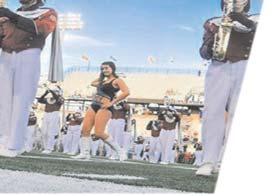



Annual Events

Southeastern United States Concert Band Clinic – Middle School

Southeastern United States Choral Clinic –High School






Southeastern United States Concert Band Clinic – High School






Guitar Festival
February 17, 2017
Vocal Jazz Invitational


Clarinet Day
Degree Programs
Bachelor of Arts in General Music









































Bachelor of Science in Music Industry



Bachelor of Music Education – Instrumental

Bachelor of Music Education – Vocal/Choral Music Minor
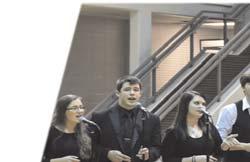
Music Industry Minor

Performing Arts Minor
For more information and calendar of events please visit: Music.troy.edu

The New National Boards for Music Educators
Nationally, there are more than 112,000 teachers in all 50 states, including Washington, D.C. who have attained the highest standard of teacher certification; National Board Certification. According to the National Board for Professional Teaching Standards website (www.nbpts.org): Alabama has 2,339 teachers who are currently National Board certified, and that number continues to rise yearly. Of that 2,339 only 54 music educators are currently certified. To say that Alabama music educators are underrepresented, would be an understatement.
“Within the United States and across nations, there seems to be consensus that teacher quality is the most important school-based variable in determining how well a child learns” (Thorpe, 2014, p. 1). This statement, and others like it, became a catalyst for school reform, specifically, in the area of teacher certification. Public unrest in public and private schools in America became a national issue. In April of 1981, the United States Secretary of Education T.H. Bell, created a commission to examine the practices of public and private schools, as well as colleges and universities (Gardner, 1983). One of the many goals of this commission was to assess the quality of teaching and learning. The commission published a report titled A Nation at Risk, which forced educators to explore ways to raise the quality of teacher preparedness and quality in America. In direct response to A Nation at Risk, a subsequent report, A Nation Prepared: Teachers for the 21st Century, was published by the Carnegie Task Force on Teaching as a Profession in April 1986 (Carnegie Commission, 1986). A Nation Prepared called for a restructuring of standards and a strengthening of education profession. From this report, the National Board for Professional Teaching Standards were suggested and formed in 1987. The National Board consists of teachers, administrators governmental officials and business leaders.
The Five Core Propositions
The foundation for all of the National Board standards are based on five core propositions which were established in its 1989 publication What Teachers Should Know and Be Able to Do:
Teachers are committed to students and their learning.
According to the National Board website (www.nbpts), accomplished teachers believe that all students can learn and they provide opportunities for students to be successful consumers of knowledge. Accomplished teachers celebrate diversity among students and use their diverse classrooms to adjust their practice to ensure all students are learning at an appropriate pace. Accomplished teachers also know the students they teach and how they learn. They ignite a passion for learning and uplift students.
Teachers know the subjects they teach and how to teach those subjects to students.
Accomplished teachers have deep understanding of the subject(s) they teach. They also possess the appropriate pedagogy skills necessary to convey knowledge to their students. Accomplished teachers generate multiple paths to knowledge understanding what students should know and how to get them where they need to be.
Teachers are responsible for managing and monitoring student learning.
Accomplished teachers maintain the instructional flow of their classrooms and fully engage and enrich students. They motivate individual, as well as, groups of students to work collaboratively to accomplish tasks. They also know how to assess the progress of students, utilizing multiple avenues of assessment, and how to report the students’ progress to the student, their parent and the administrator.
Teachers think systematically about their practice and learn from experience.
Accomplished teachers demonstrate, through their own lives, the discipline, determination, curiosity, respect for diversity and honesty it takes to be a life-long learner. They model taking risks and explore their creative sides to solve problems providing examples for their students. In an effort to strengthen their own
by Phil Wilson
ala breve 45
Alabama has 2,339 teachers who are currently National Board certified, and that number continues to rise yearly. Of that 2,339 only 54 music educators are currently certified.
teaching, accomplished teachers take time to examine their own teaching practices adjusting it to new theories or ideas.
Teachers are members of learning communities.
Accomplished teachers work collaboratively with their colleagues moving the mission of their schools forward. They know and understand where school and community resources are and are knowledgeable on how to attain those resources. They also understand the strength of collaboration with parents and welcome them to be a part of the learning process.
National Board and Music Standards
Based off of the five core propositions, the National Board narrowed the scope of each subject area into more discipline focused standards. Music standards are organized into eight standards:
Standard 1: Knowledge of Students
Standard 2: Knowledge of Skills in Music
Standard 3: Planning and Implementing Assessment
Standard 4: Facilitating Music Learning
Standard 5: Learning Environments
Standard 6: Valuing Diversity
Standard 7: Collaboration
Standard 8: Reflection, Professional Growth and Professional Contributions
These standards are not only used for the completion of board certification, but school systems are also using them as the standards to evaluate veteran teachers. “The National Board for Professional Teaching Standards (NBPTS) defined accomplished teaching to guide assessments for veteran teachers” (Darling-Hammond, Amrein-Beardsley, Haertel, & Rothstein, 2012).On the website (www.nbpts.org) the National Board gives very detailed information about each standard and what expectations exists for completion of the certification process.
Qualifications for Application
Once you know and understand the history and overall purpose of National Board, the next part of your journey is to see if National Board Certification is for you. Ask yourself these questions to find out if you qualify (a) do you have a bachelor’s degree from an accredited institution, (b) do you have a valid state teaching license, and (c) do you have at least three years of teaching experience? If
your answer is yes to all three questions, CONRATULATIONS! You meet all the necessary requirements to apply to begin this incredible journey.
The Process
Just as we require our students to follow complete directions when turning in assignments, National Boards require the same of you. The first step in the process is to read, read and read some more. Every standard, component and fee is outlined upfront so that you completely understand the process and the expectations. A complete guide of expectations is available for you on the website (http://www.boardcertifiedteachers.org/). When you have read and understood the process, you will officially register. To register you attest that you meet all of the qualifications for application and pay an annual nonrefundable fee of $75.00. Some school systems in our state will pay this fee for you. Ask your administrator. You will also be asked to identify the area in which you will be seeking certification. Music offers two levels of certification; Early and Middle Childhood Education, ages 3-12, and Early Adolescence through Early Adulthood Education, ages 1118+. Each of these certification areas contain 4 components to be completed before you are considered to be a National Board Certified Teacher. One of the many revisions National Board made to make the process simpler for teachers is to allow teachers to complete and pay for one component at a time. Each component is $475.00 and is valid for exactly one calendar year, January to December. The total cost is $1,900. When I went through certification in 2010, there were two options, completing one component for scoring, completing the other three components, and then taking the assessment, or doing it all within a year’s time frame. The process has been condensed without watering down the content. Again, adherence to deadlines is a must. Once National Boards has received your application and fees it will begin processing your application. If everything checks out, you can begin the process which is one of selfreflective, student centered videos and portfolio writing.
For both levels of music certification there are four components.
Component 1: Content Knowledge
Component 2: Differentiation in Instruction
Component 3: Teaching Practice and Learning Environment
Component 4: Effective and Reflective Practitioner Components
Component 1 is the assessment piece and requires the teacher to demonstrate that they understand how students learn and how to appropriately teach them. Utilizing a computer-based assessment, candidates are asked to answer questions about history and theory, curriculum and instructional strategies, content specific questions about band, orchestra, vocal or general music education and performing repertoire, techniques, connections to other disciplines and world music examples. There are approximately 45 selected response questions and you will have 30 mins to complete them. To take the assessment, you will need to schedule an appointment at a testing center. National Boards lists all those available in your area.
Component 2, 3 and 4 are all portfolio entries. In your instructions for these components you will be given strict instructions on how to construct your answers and page number limits you are to write within. In component 2 you will be asked to demonstrate a series of interrelated lessons, a unit or rehearsal and discuss what instructional strategies you utilized to ensure all students are learning. Accompanying the writing in this component will be two brief videos demonstrating what you write about.
Component 3 focuses on your planning and video proof of your intentions for lessons you chose to discuss. You will be asked to give an overview of the lessons and provide two 10-15 minute videos of your teaching practice. Supporting materials must accompany this component. The final section of this component is an analysis and reflection piece about your teaching.
In Component 4, you will select a group of students from the current school year, most likely an entire class, and develop a complete profile of that group of students. You will collect evidence from the students in the form of work completed and assessments and demonstrate how you link the assessment data to your practice. Also, you must show how you utilize the data gathered from assessment to design lessons to positively affect the students’ lives. To end this component, there is also a teacher reflection prompt for you to reflect on your practice of assessment and how you intend to strengthen your assessment
46 February/March 2017
practices for the future.
After you have completed all sections of the components, upload everything to the National Board ePortfolio server and be patient. Scores are typically released on or before December 31.
The Benefits
When looking at the amount of work it takes to complete National Board Certification and the financial obligations that must be met, it is easy to say this is not for me. Trust me, I thought the same thing myself. But the benefits outweigh the doubt in your mind. In a study assessing the effect of elementary level teachers who are National Board Certified, Goldhaber & Anthony (2007) state that this study “appears to confirm that there is value to the NBPTS assessment 25 process in distinguishing between more- and lesseffective teachers: teachers who are certified by NBPTS tend to be more effective than unsuccessful applicants to the program”. Effective teachers are what A Nation at Risk was looking for and through the National Board Certification process we are changing the trajectory of music education in this state, and essentially in this country. Being an effective teacher alone is benefit enough to go through the process, but the State of Alabama takes it a bit further. Each year, though it is not guaranteed, the State of Alabama awards a $5,000 stipend, minus benefits, to board certified teachers who complete the entire process. Currently, the certification lasts for 10 years, but beginning in the year 2021, the certification will only last for 5 years. The face of education is quickly changing, and National Board wants to ensure the most recent, vigorous standards are in place for teachers to meet the growing demands of our global world.
Where to find help
As a music educator, being the only person in your building can be a lonely experience. Outside of general academics, no one in our schools truly understand what we do and why we do it the way that we do. If you decide to go through the process of National Boards, you do not have to do it alone. Start by checking with your school systems to see if there are support systems in your district, or contact the Alabama Department of Education to find a cohort near you. I have the great pleasure of serving on the Alabama Network of National Board Certified Teachers board and we are working with
school systems in the state, with grant funds from the National Board, to increase the number of board certified teachers in our state. The Alabama Network hosts conferences and professional development throughout the year where initial certification, as well as, renewals are always discussed. Email alabamanetwork@gmail.com for more information. Lastly, if you know of an NBCT, talk to them. We are generally willing to help anyway that we can.
Of Alabama’s 2,339 National Board Certified teachers, only 54 are music teachers. As a profession, we are underrepresented in this area. If we truly want a seat at the table when education issues are being discussed and definitions of a well-rounded education for children are being developed, then we must consider National Board Certification. Time and money seem to be the two roadblocks that discourage music teachers from taking the journey. The new National Boards have addressed this issue by making the process more affordable and more accommodating to time. Daily, we give our students the best we have, and they respond by giving us their best. The time has now come to make our best better. Consider National Board Certification for Music Educators.
References
Carnegie Commission. (1986). A nation prepared: Teachers for the 21st century. In New York: Carnegie Forum on Education and the Economy
Darling-Hammond, L., Amrein-Beardsley, A., Haertel, E., & Rothstein, J. (2012). Evaluating teacher evaluation. The Phi Delta Kappan, 93(6), 8-15.
Gardner, D. P. (1983). A nation at risk. Washington, DC: The National Commission on Excellence in Education, US Department of Education.
Goldhaber, D., & Anthony, E. (2007). Can teacher quality be effectively assessed? National board certification as a signal of effective teaching. The Review of Economics and Statistics, 89(1), 134-150.
Thorpe, Ronald (2014) “Sustaining the Teaching Profession,” New England Journal of Public Policy: Vol. 26: Iss. 1, Article 5.
Phil R. Wilson is the music teacher at Ogletree Elementary School in Auburn, Alabama, where he has taught for the past fourteen years. Prior to coming to Auburn, Phil taught at Thomasville High School in Thomasville, Georgia, where his duties included directing the chorus, assisting the band director, and directing literary activities.
Phil graduated from Troy (State) University in 2001 with a Bachelors of Music Education degree and went on to pursue his Masters of Music Education from Auburn University in 2007. In 2010, Phil became a National Board Certified Teacher in the area of Early and Middle Childhood Music. He is currently pursuing a Ph.D. in Music Education from Auburn University. Phil is the 2010-2011 Alabama State Teacher of the Year.

Phil is a member of NAfME; The National Association for Music Education, the Alabama Music Education Association where he serves as President-Elect of the Elementary division, the Alabama Education Association, and Phi Mu Alpha Sinfonia, Professional Music Fraternity of America. He also serves on the board of the Alabama National Board Certified Teachers Network.
An educational festival for elementary, middle, and high school students in band, choir, and orchestra
2017 dates: April 21-22, April 28-29, May 5-6
2018 dates: April 20-21, April 27-28, May 4-5
www.SMMFestival.com or call:1-855-766-3008
ala breve 47
AMEA Industry/Institutional Membership
AMEA would like to express appreciation to the following partners who have joined AMEA in our efforts to promote music education in Alabama. Please support these industry/institutional members who support you as music educators!
Arts Music Shop Inc., 3030 E. Blvd., Montgomery, AL 36116
Custom Fundraising Solutions, 225 Distribution Drive, Homewood, AL 35209
Eastman Music Company, 2158 Pomona Blvd., Pomona, CA 91768
Faulkner University Department of Music, 5345 Atlanta Hwy, Montgomery, AL 36109
Gadsden Music Company Inc., 607 Broad Street, Gadsden, AL 35902
Group Travel Network, Inc., 7485 Conroy Windermere Rd. Suite D, Orlando, FL 32835
John M. Long School of Music, School of Music, Troy, AL 36082
JW Pepper, 9053 Riverside Pkwy, Lithia Springs, GA 30122
Landmark Tour and Travel, 704 37th Street South, Birmingham, AL 35222
Marchmaster Inc., P.O. Box 73379, Newnan, GA 30271
Musical Destinations, P.O. Box 771060, Winter Garden, FL 34777
OrlandoFest, 7081 Grand National Drive, Suite 111, Orlando, FL 32819
QuaverMusic.com, 1706 Grand Ave., Nashville, TN 37212
Samford University, 800 Lakeshore Drive, Birmingham, AL 35216
Simply Sheets Fundraising, LLC, 3760 Sixes Road Suite 126-325, Canton, GA 30114
Southeastern Performance Apparel, 142 S. Woodburn Drive, Dothan, AL 36305
Southern Performances Inc., 6037 Andhurst Dr., Gulf Shores, AL 36547
Sunburst Indian River Citrus, 4960 Meadowbrook Rd., Birmingham, AL 35242
Super-Sensitive Musical String Co., 1805 Apex Rd., Sarasota, FL 34241
Superior Travel and Tour, 1270 Coronado Terrace, Deltona, ,FL 32725
Thomas Tours, Inc., 2405 12th Ave. South, Nashville, TN 37204
University of Alabama Bands, 211 Moody Music Building, Tuscaloosa, AL 35487
University of North Alabama Dept. of Music, UNA Box 5040, Florence, AL 35632
University of South Alabama, LPAC 1072, 5751 USA Drive South, Mobile, AL 36688
48 February/March 2017































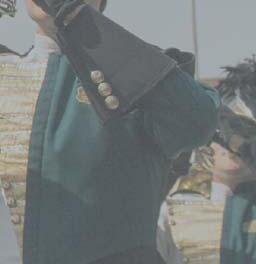









BE A PART OF HISTORY JOIN THE 2017 MARCHING BLAZERS FOR #THERETURN OF UAB FOOTBALL FOR MORE INFO: UABBANDS.ORG • (205) 975-BAND 2016 - 2017 EVENTS ORG 9 UABBANDS. OR INF F 75-BAND O:

















































UNIVERSITY OF SOUTH ALABAMA DEPARTMENT OF MUSIC The University of South Alabama Department of Music, through its innovative curriculum, empowers professional musicians, music educators, and those who wish to enrich their lives through the arts. The Department serves the needs of the University to promote general education and to provide a vital cultural link to the great state of Alabama and to the Gulf Coast region. Its excellent facilities and faculty, promotion of technology, and dedication to life-long learning provide a wide spectrum of experiences for both the student and the community. STRUMENTAL ENSEMBLES ind Ensemble mphony Band Symphony Orchestra ring Ensemble Jaguar Marching Band Jaguar Pep Band zz Ensemble Ensembles
BM with Concentration in Music Education (Instrumental or Vocal) BM with Concentration in Performance (Instrumental or Vocal) BM with Concentration in Elective Studies (Business or Specific Outside Fields) MM with Concentration in Music Education (Instrumental or Vocal) MM with Concentration in Music Performance (Piano and Vocal) MM with Concentration in Collaborative Keyboard The Music Starts Here Contact Information University of South Alabama, Department of Music Laidlaw Performing Arts Center, Room 1072 5751 USA Drive South, Mobile, AL 36688 E-mail: usamusic@southalabama.edu www.southalabama.edu/music Facebook: facebook.com/southalabamamusic Twitter: twitter.com/usouthalmusic VOCAL ENSEMBLES University Chorale USA Opera Theatre USA Concert Choir CHAMBER ENSEMBLES Flute Choir Trumpet Ensemble Trombone Ensemble Tuba Euphonium Ensemble Chamber Brass Ensembles Chamber Woodwind Ensembles Percussion Ensemble USA Steel Band USA World Music Ensemble Piano Ensemble Guitar Ensemble
Degrees:
T


PRSRT STD US POSTAGE PAID Dothan, AL 36303 Permit No. 623



















 -Christian Howes Renowned
-Christian Howes Renowned






























 Jazz Violinist/Composer
Jazz Violinist/Composer

















































































































































































































































































































































































































































































































